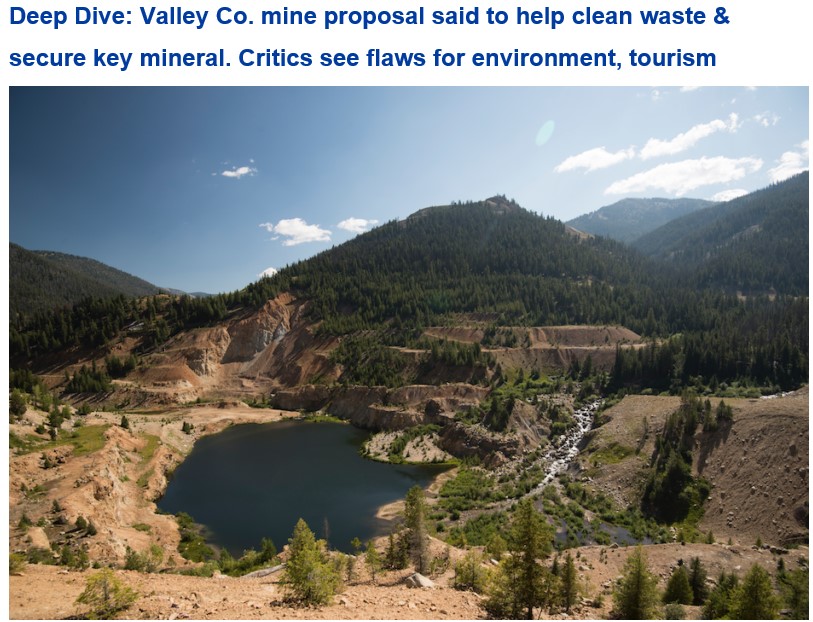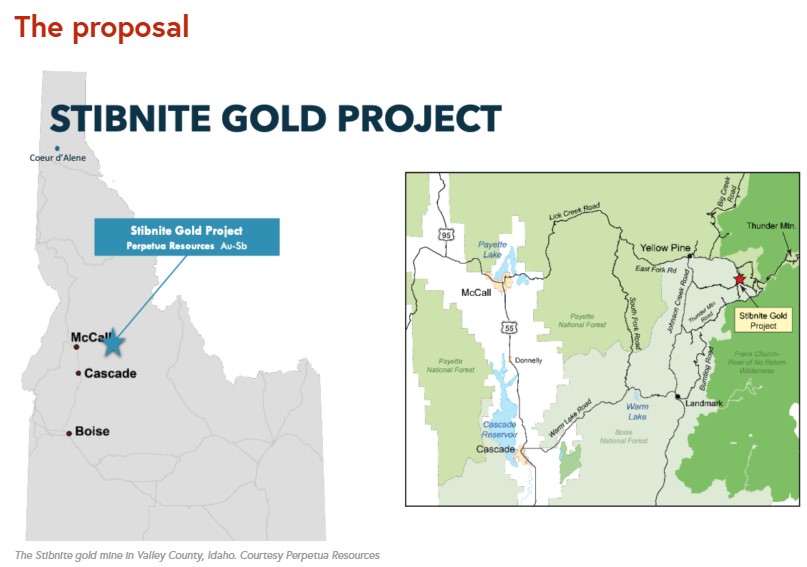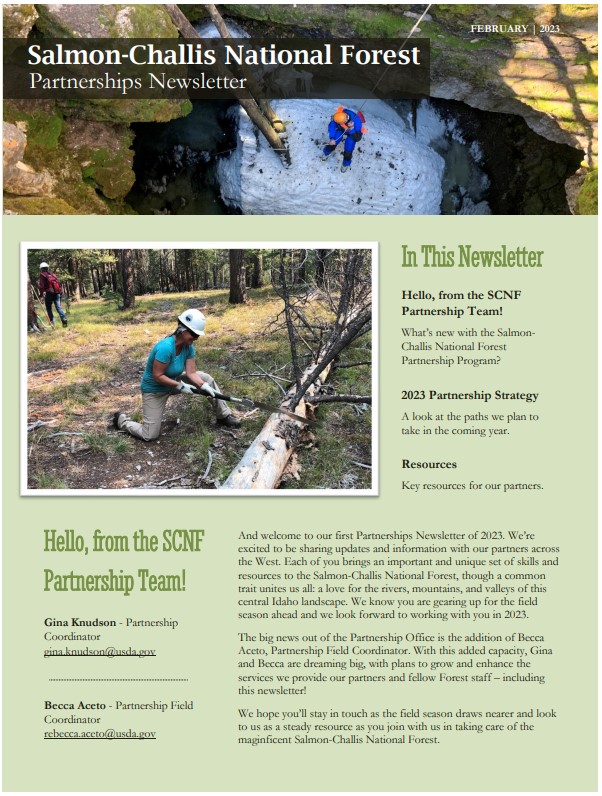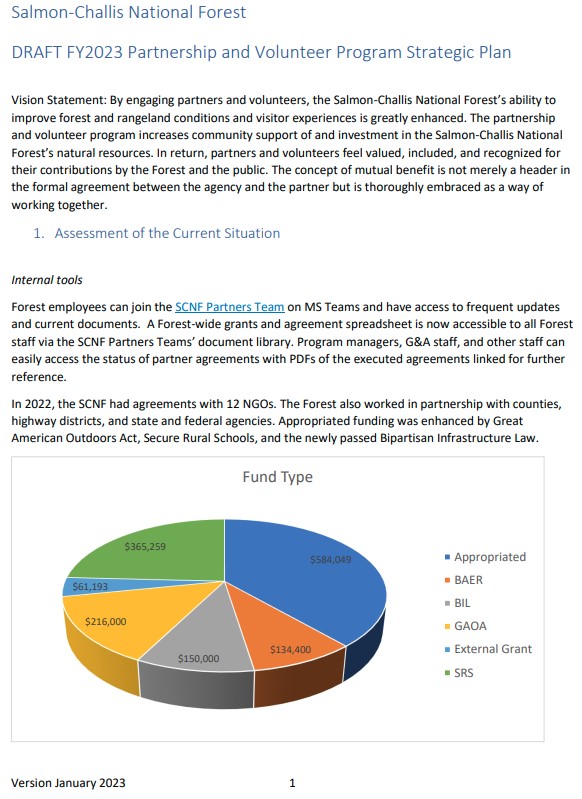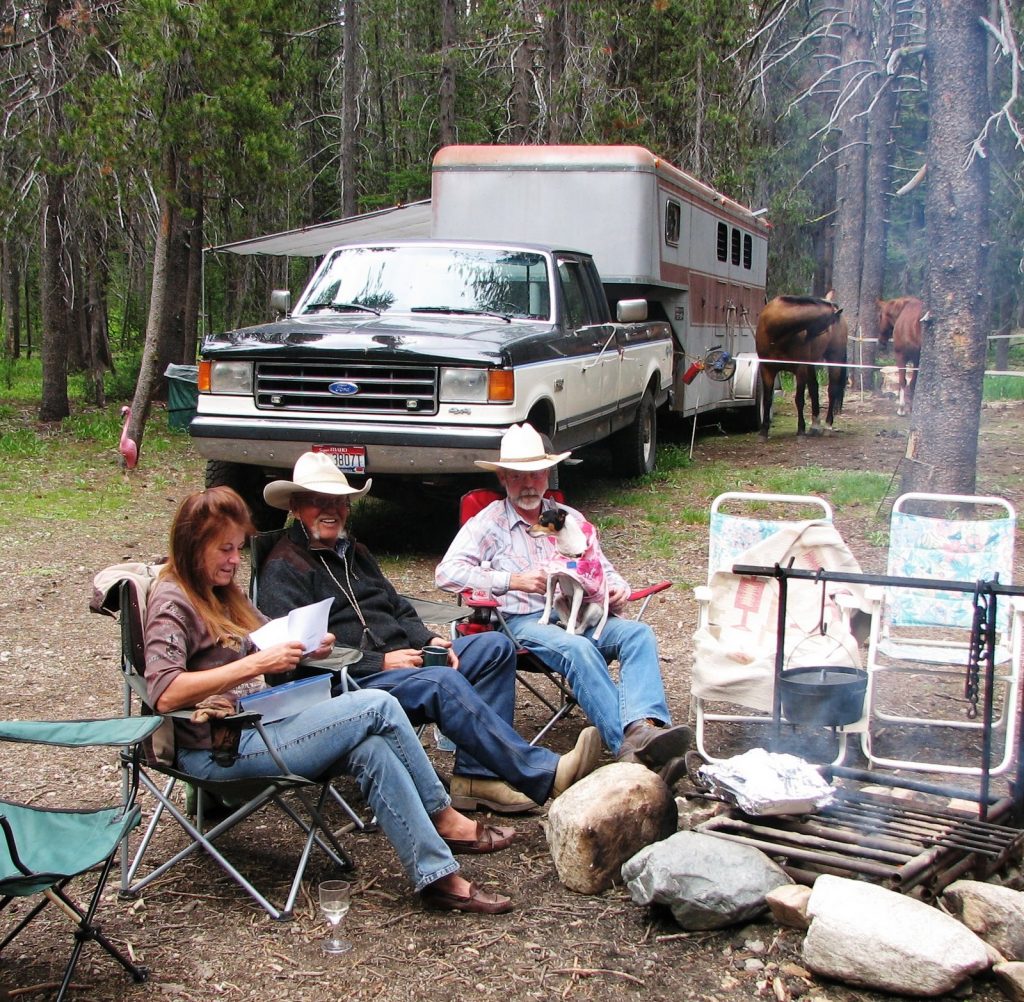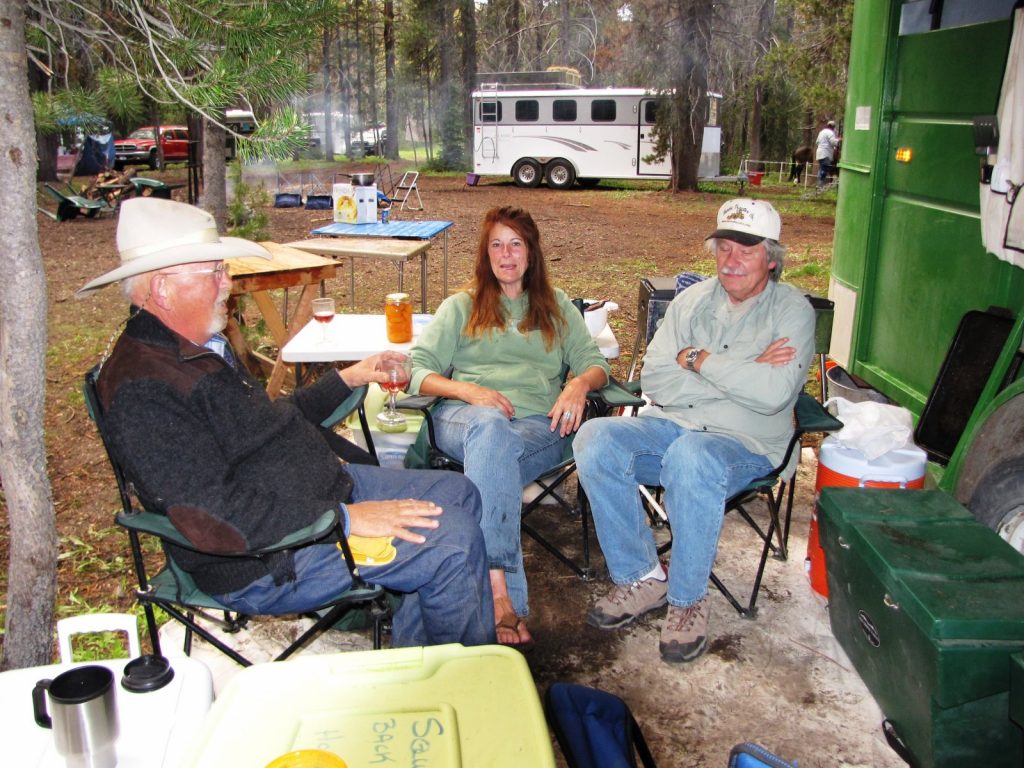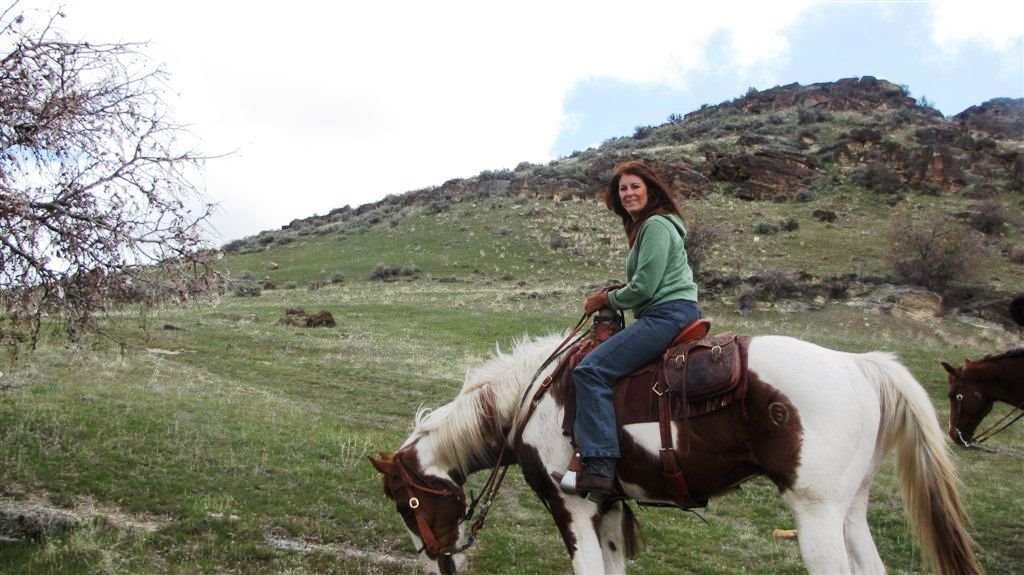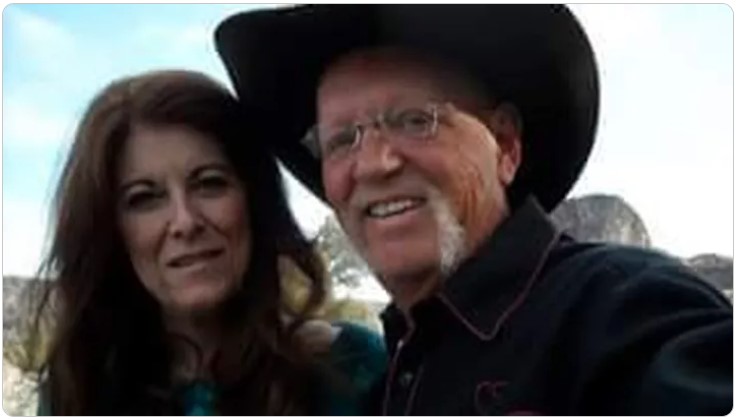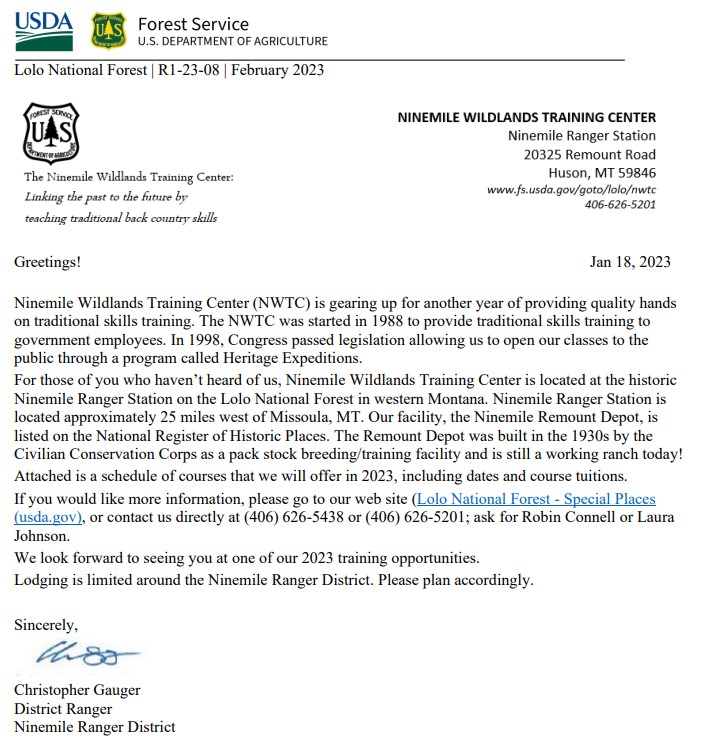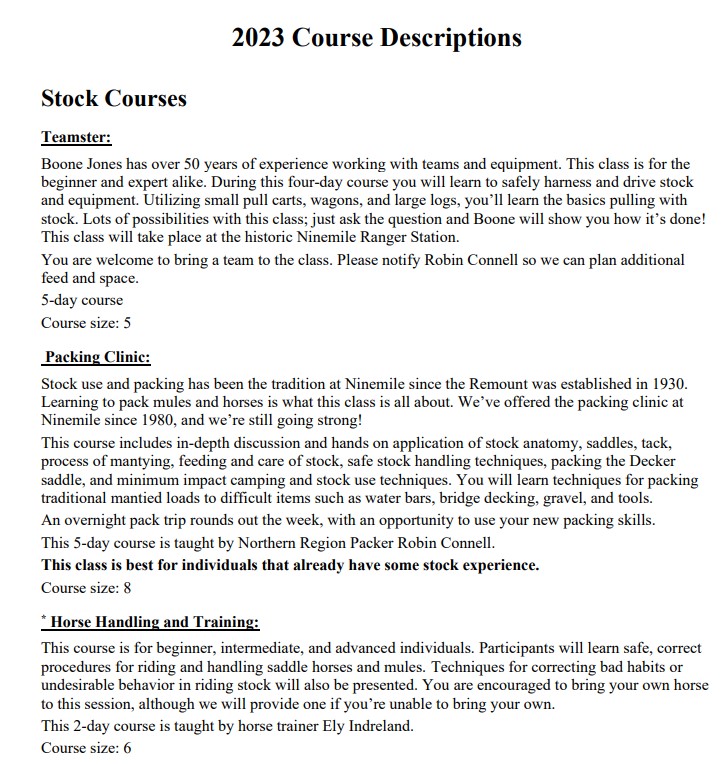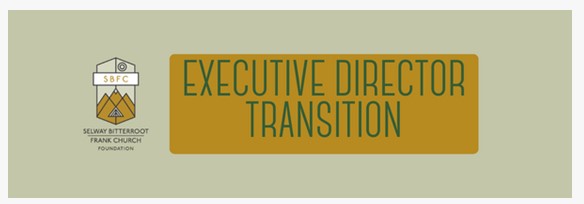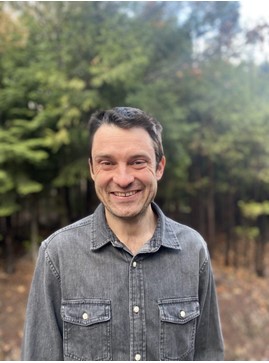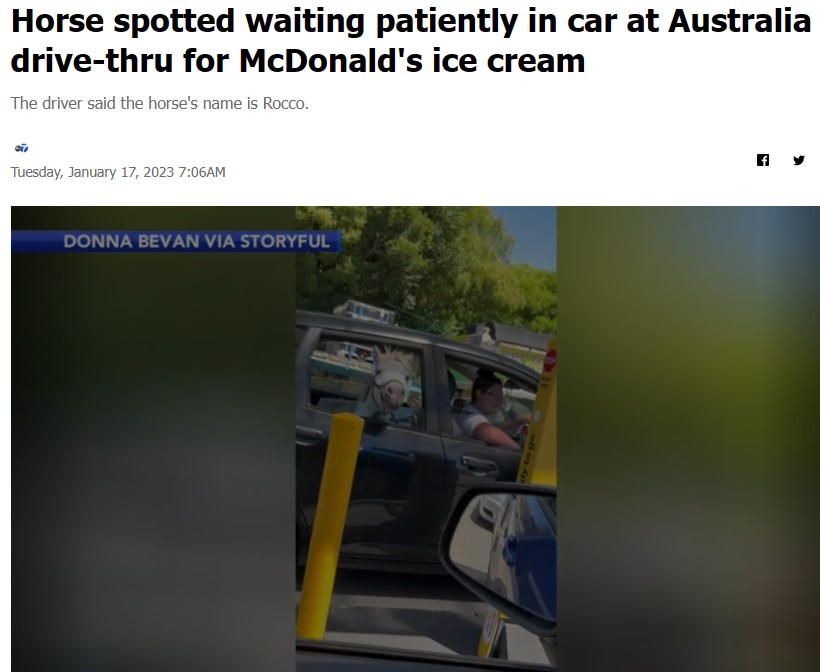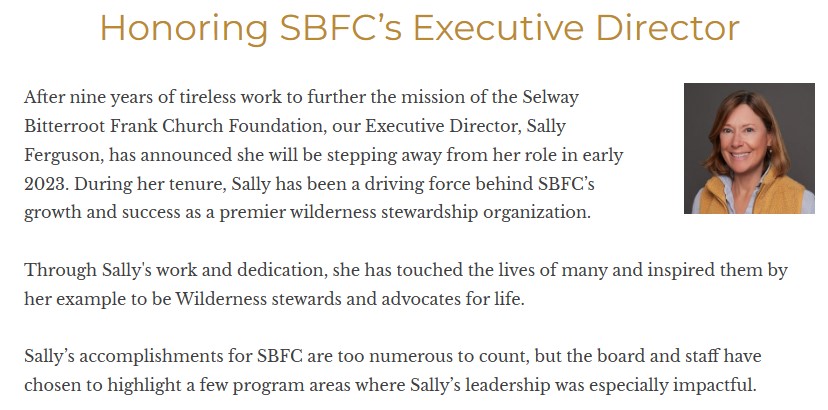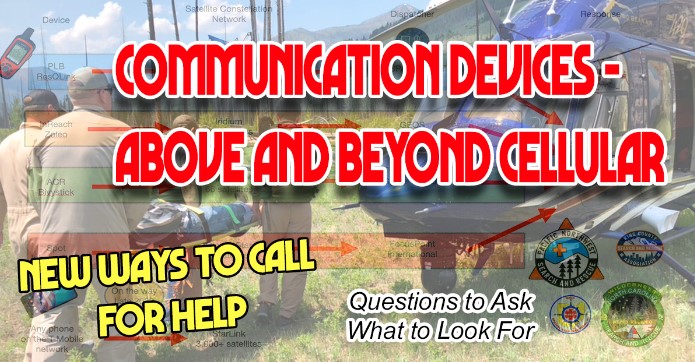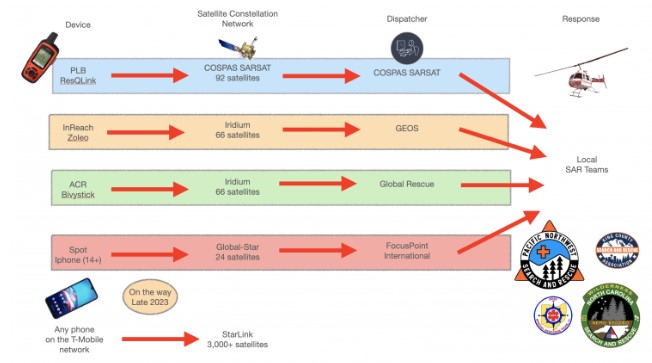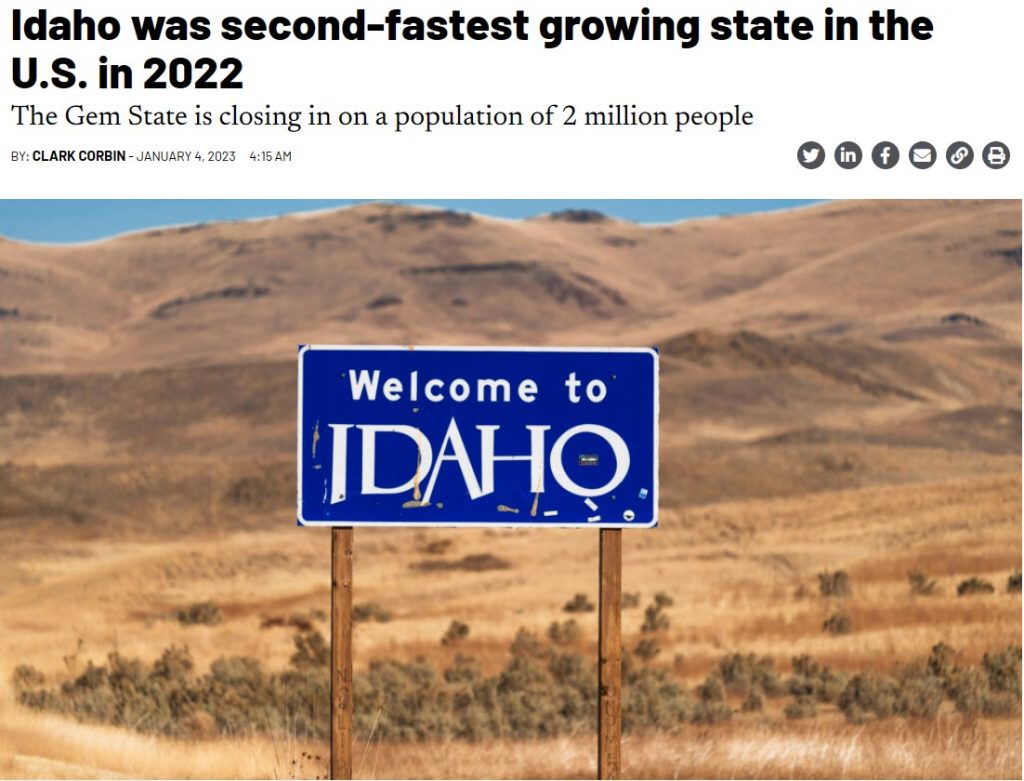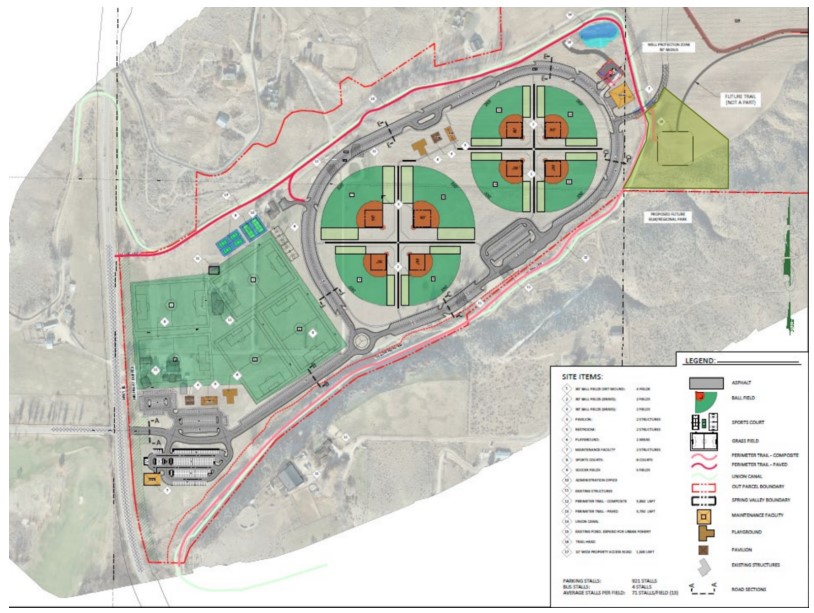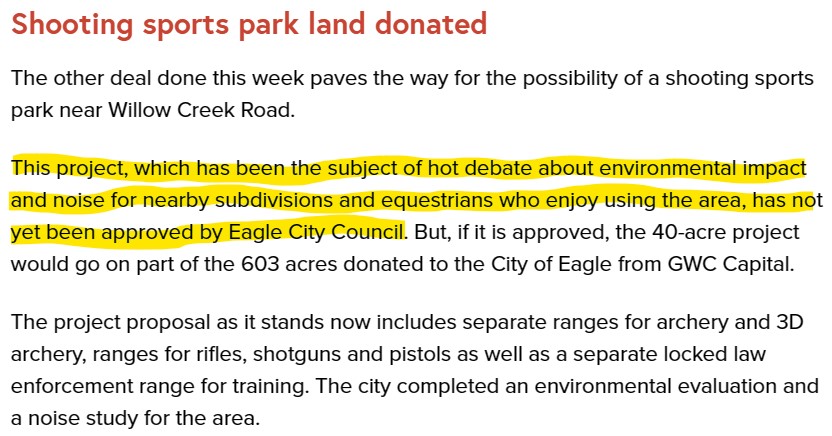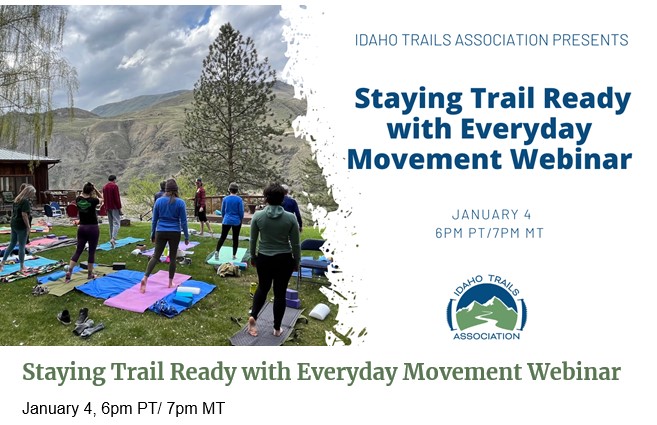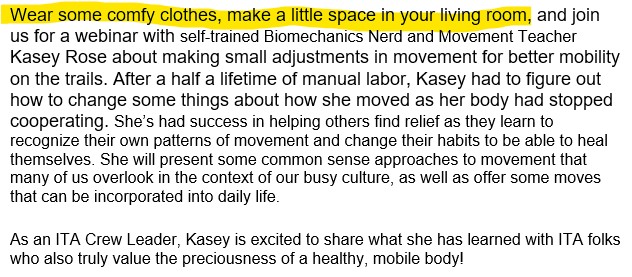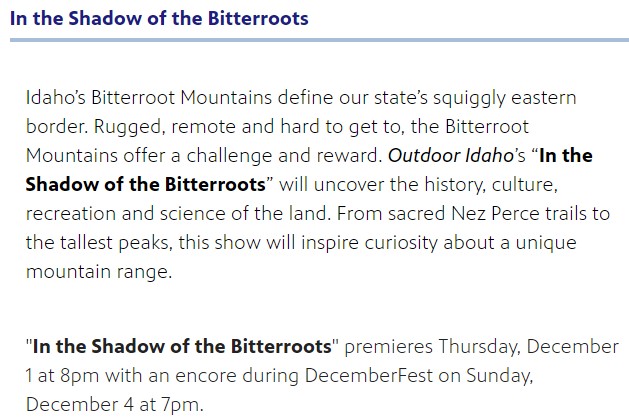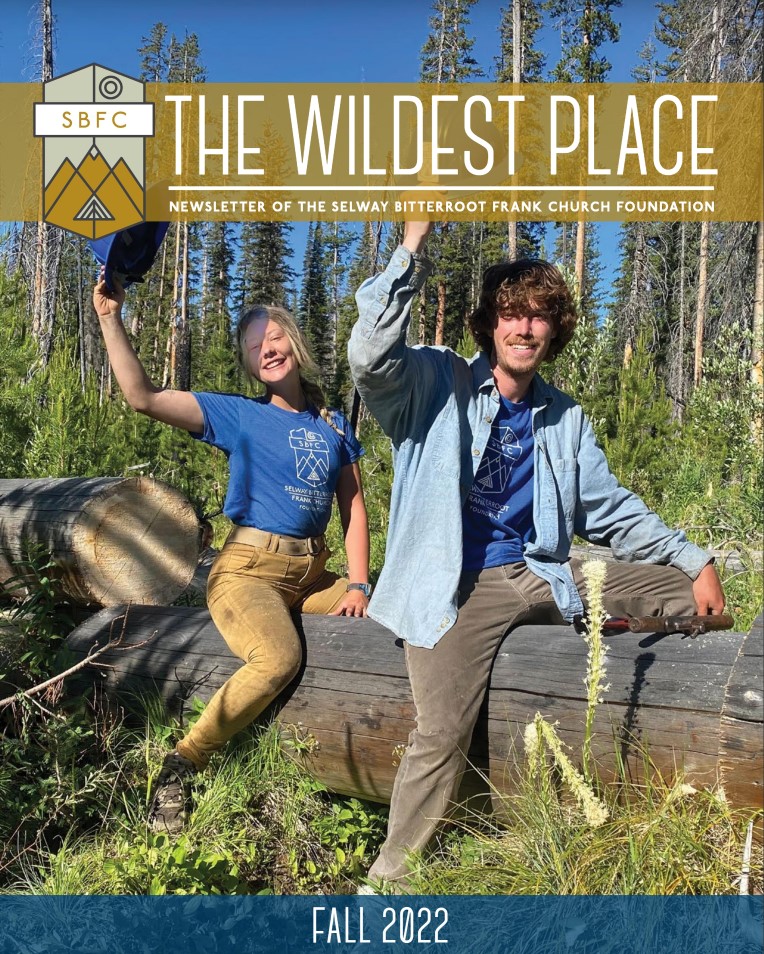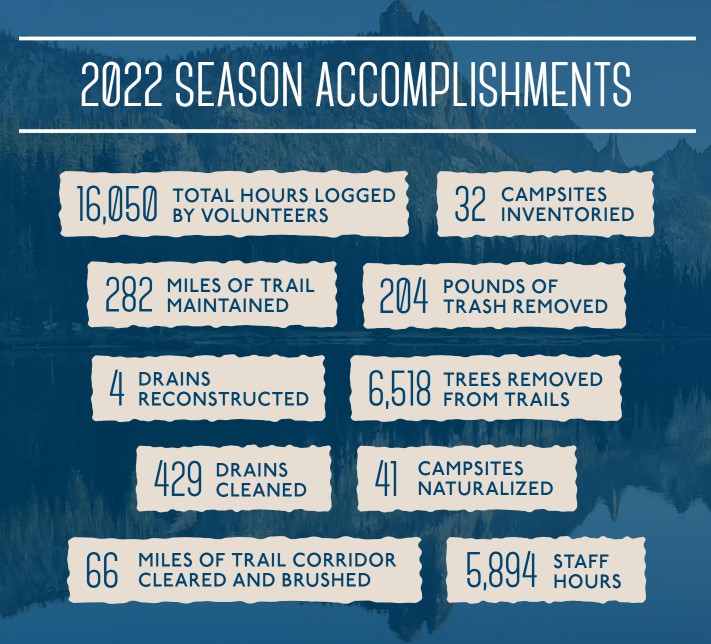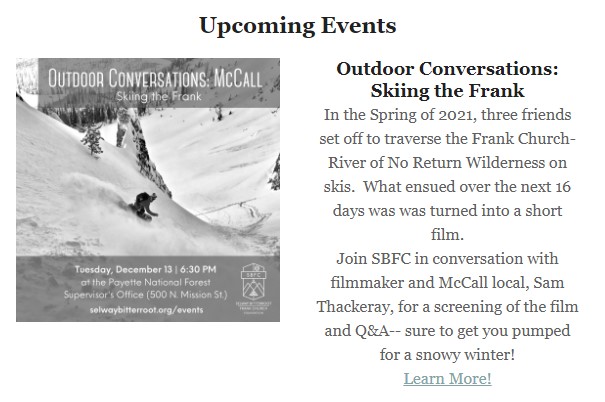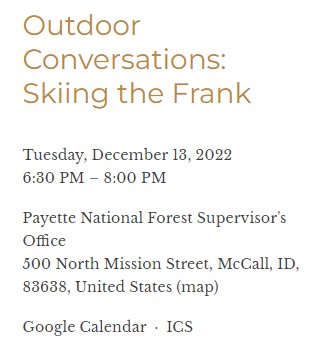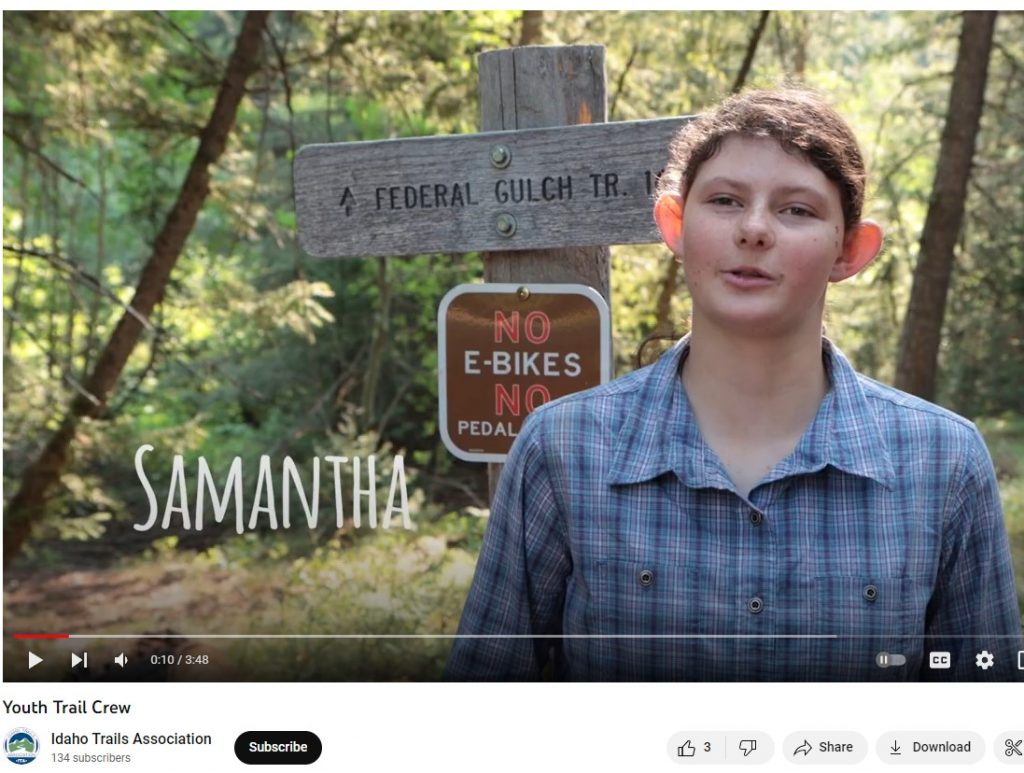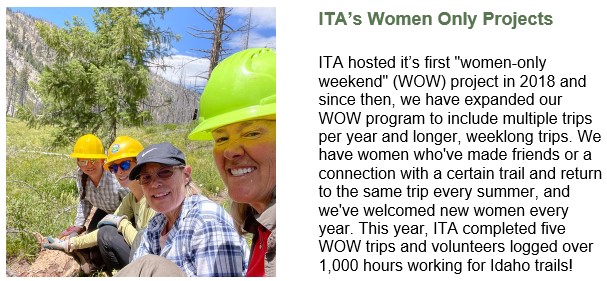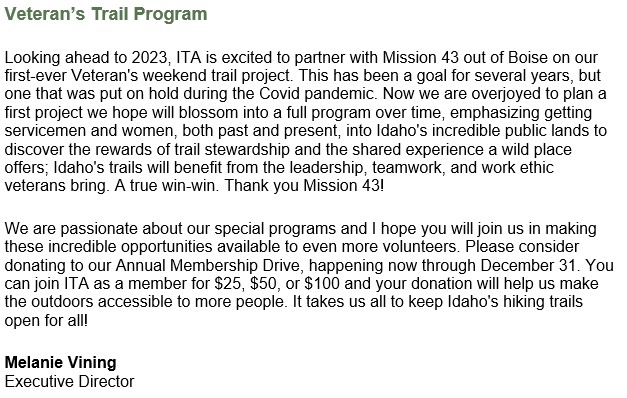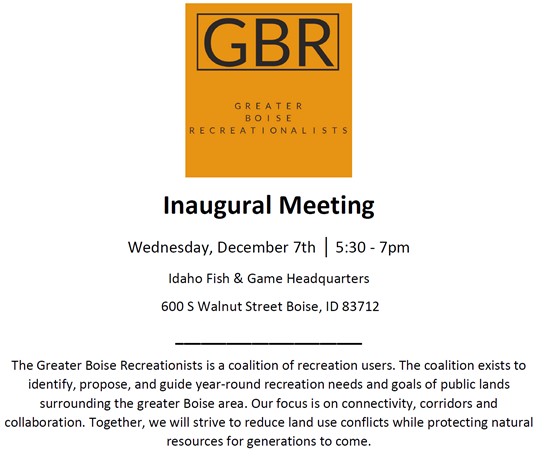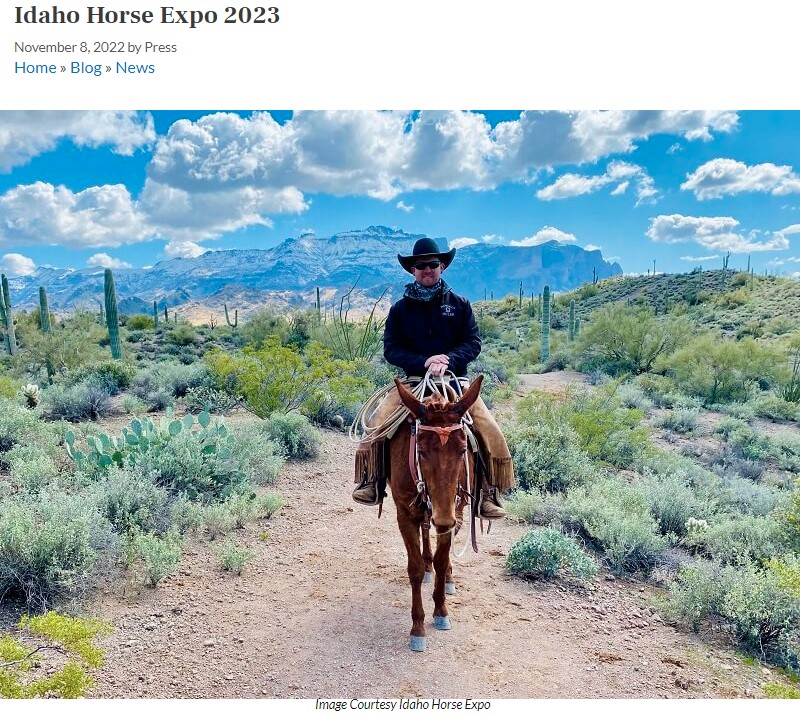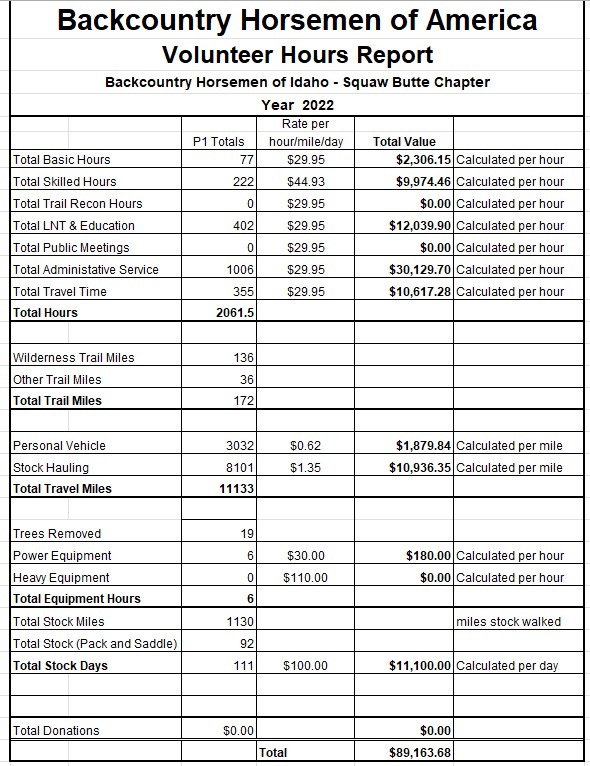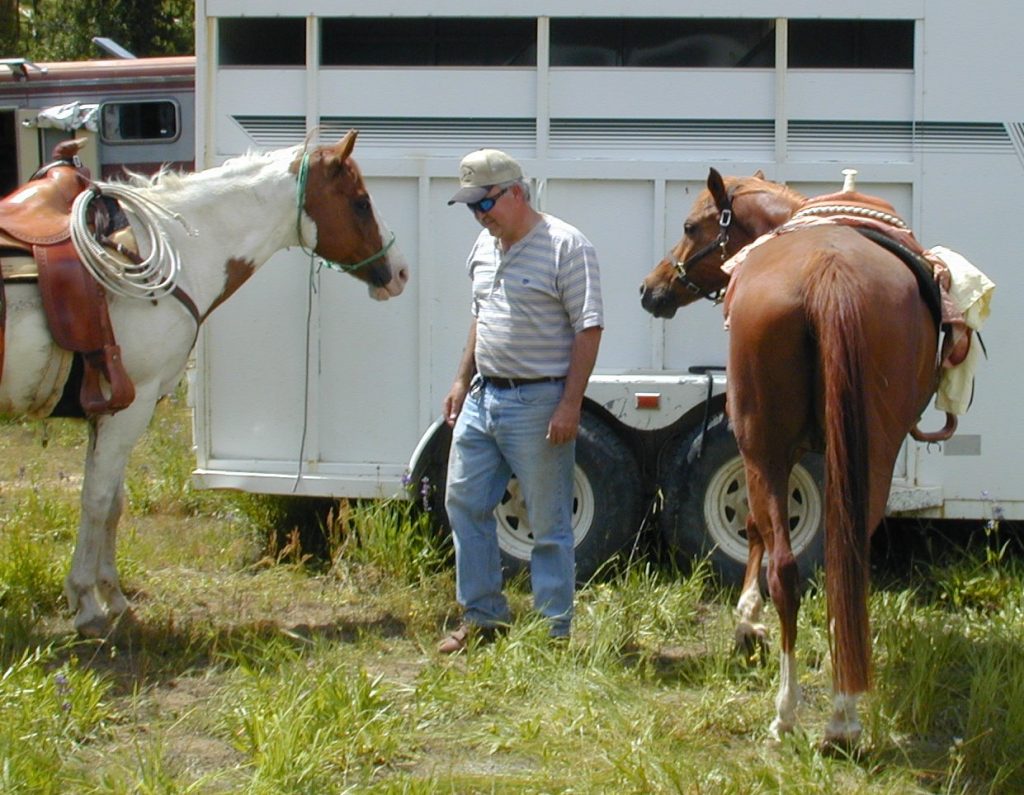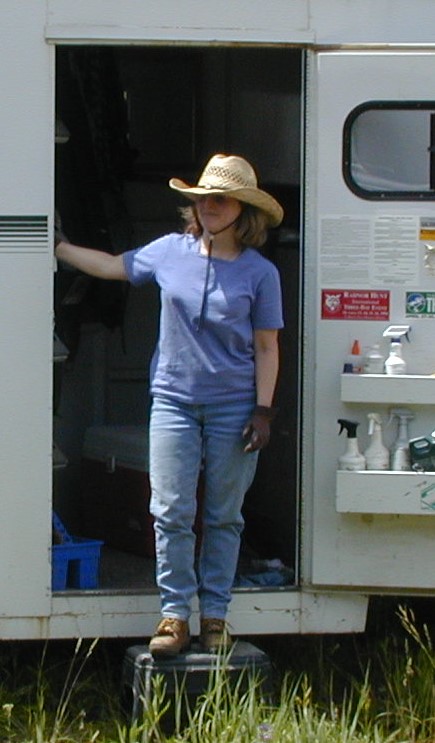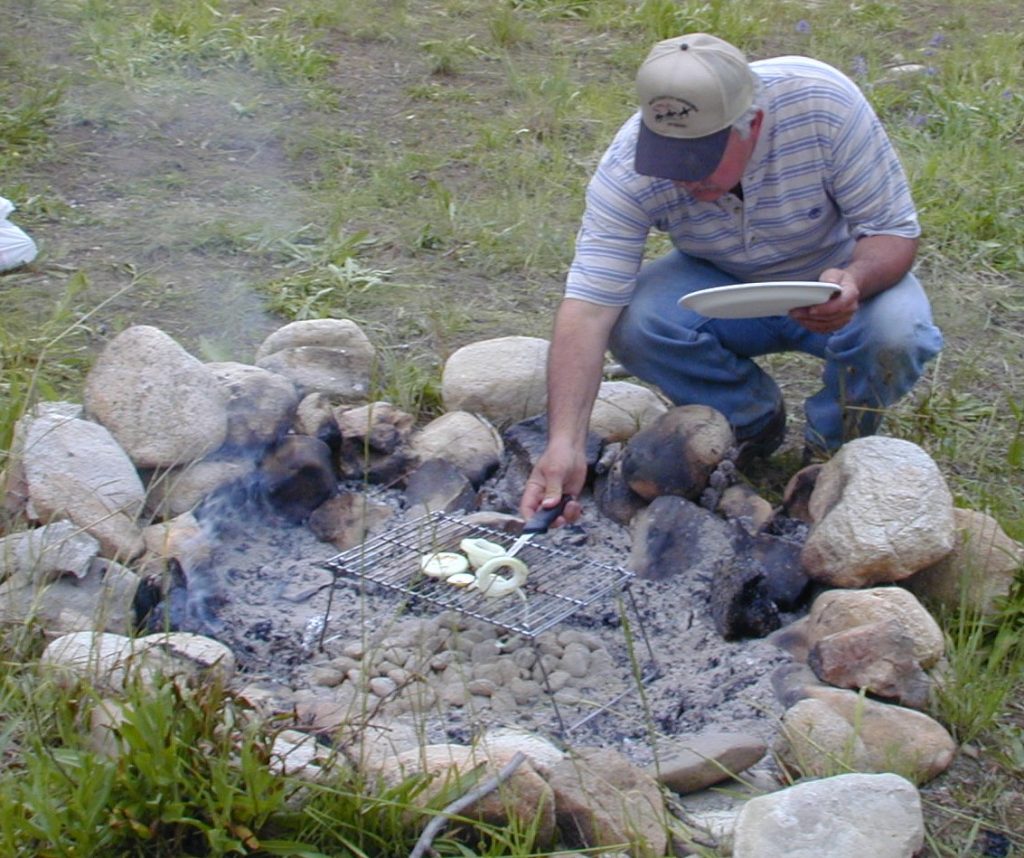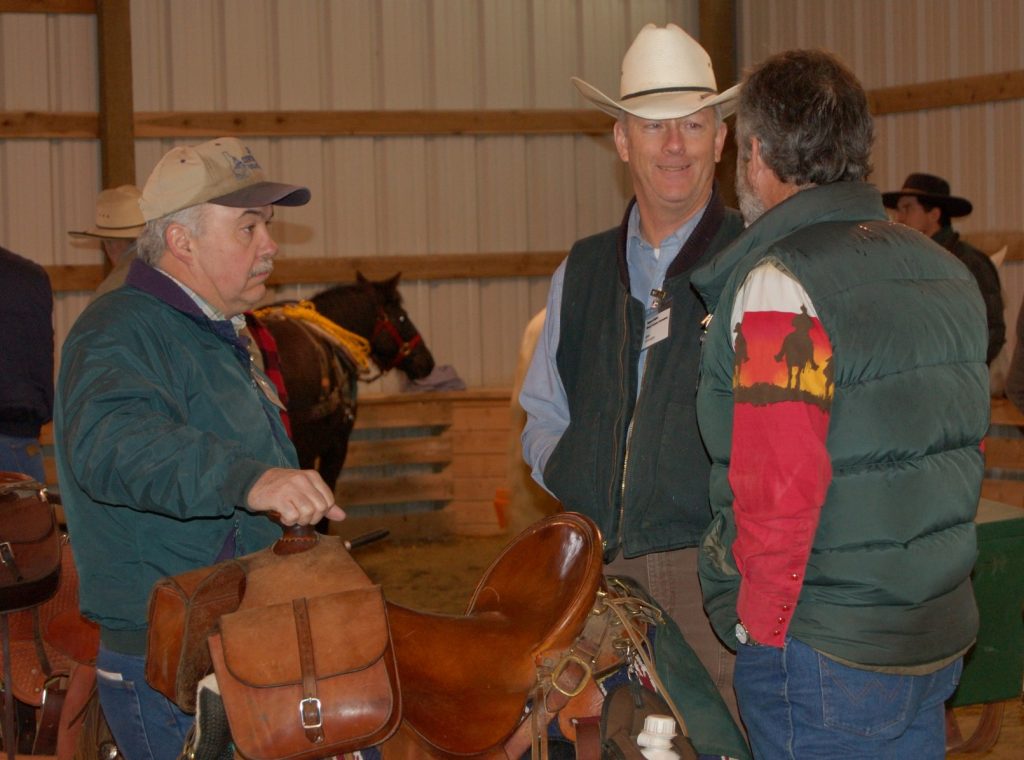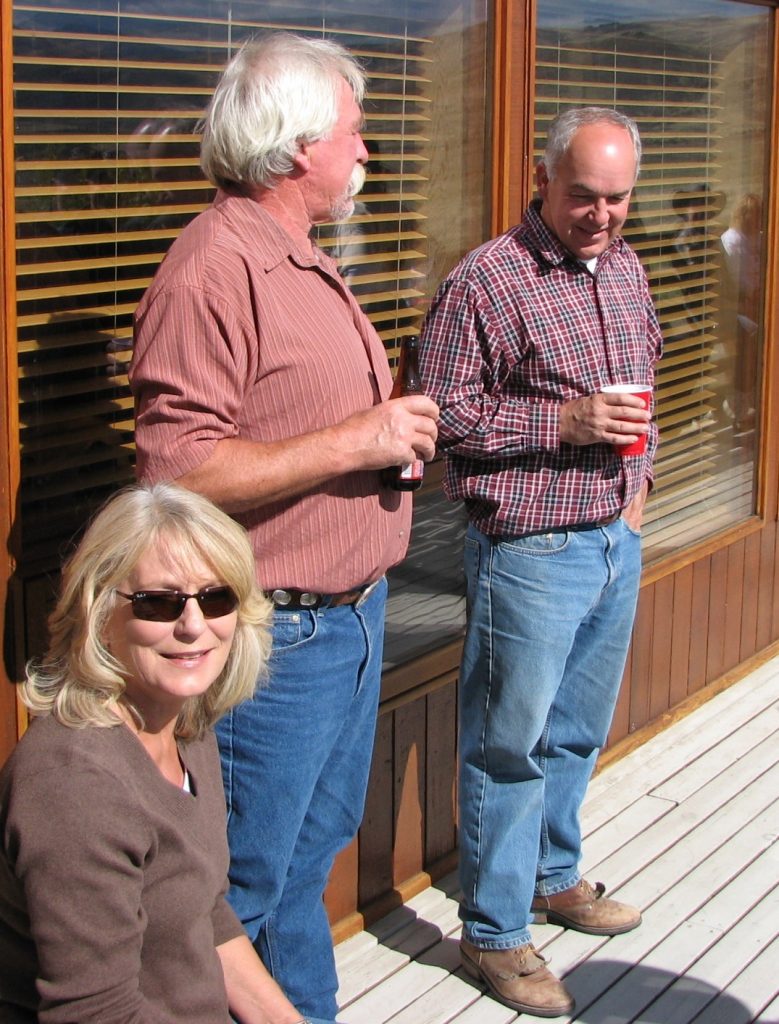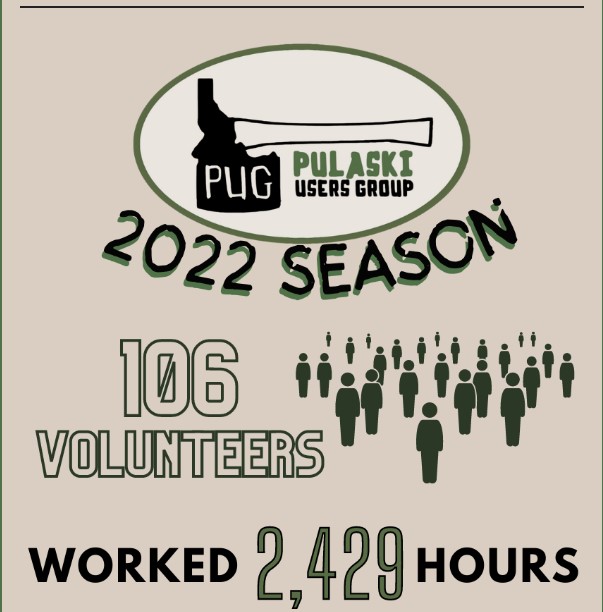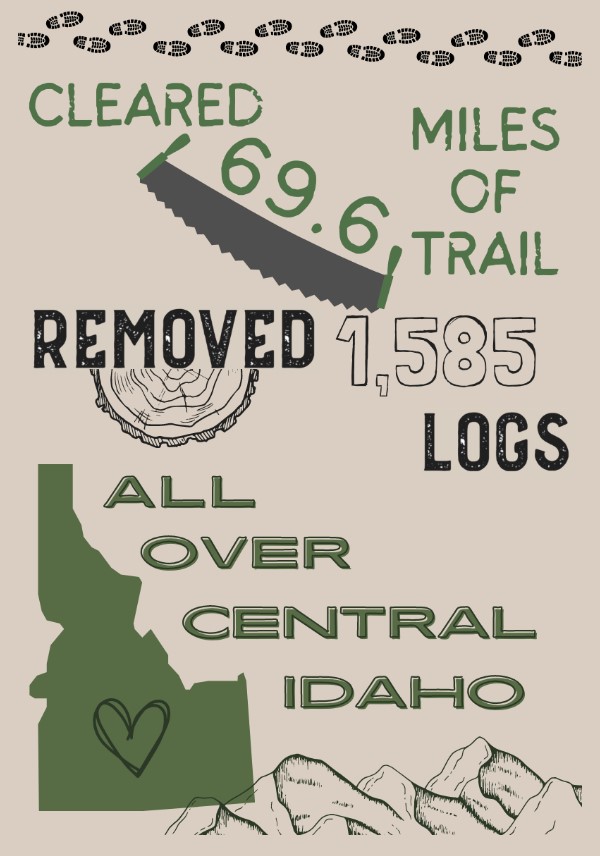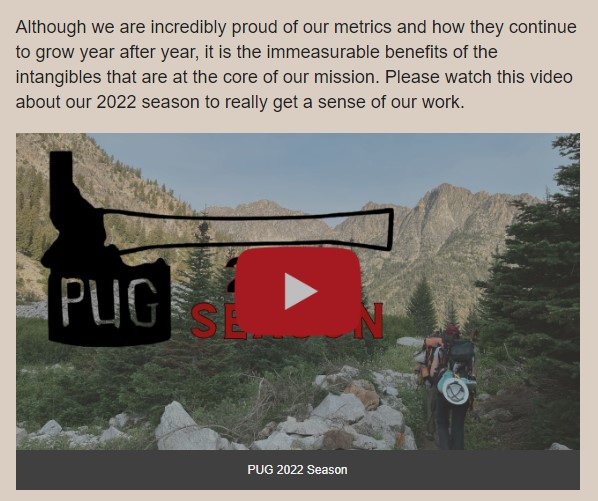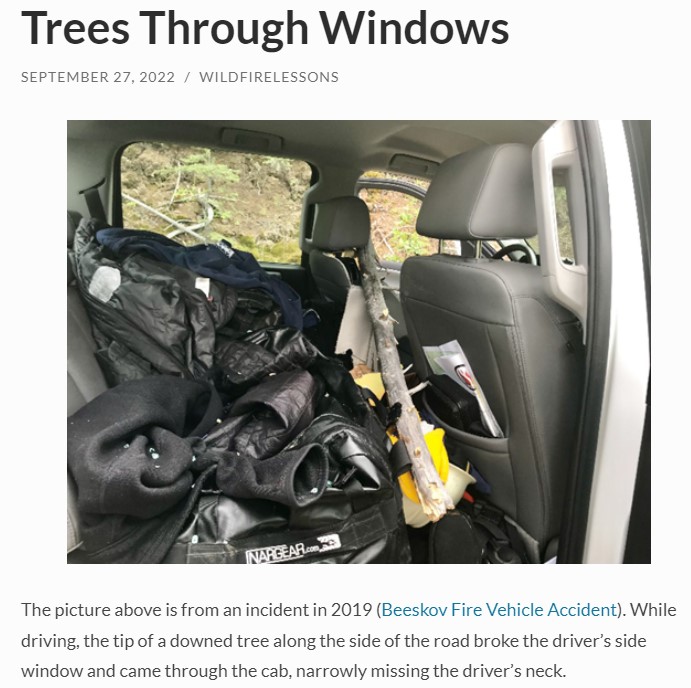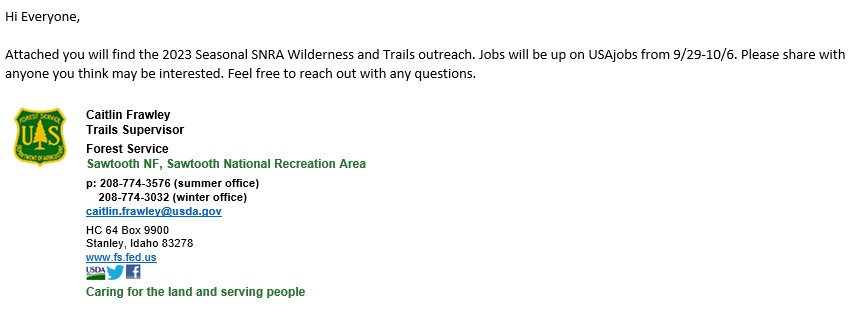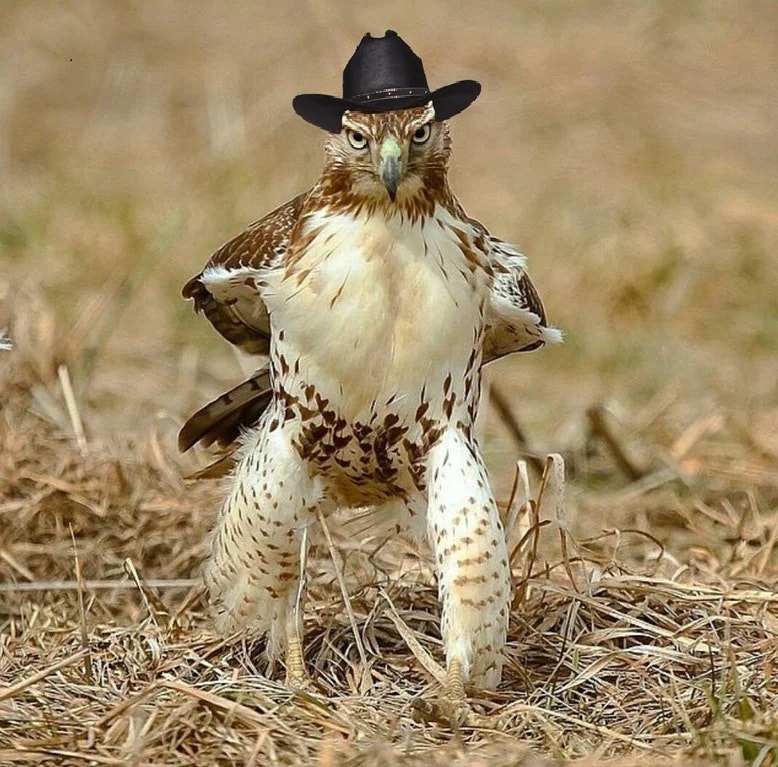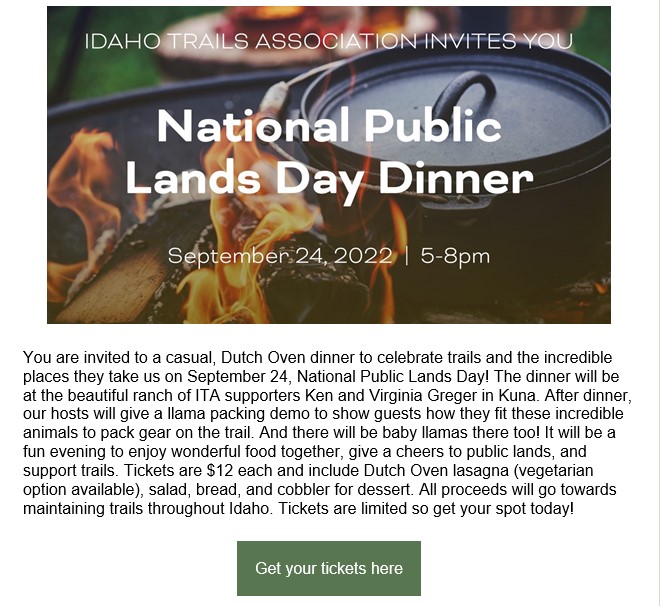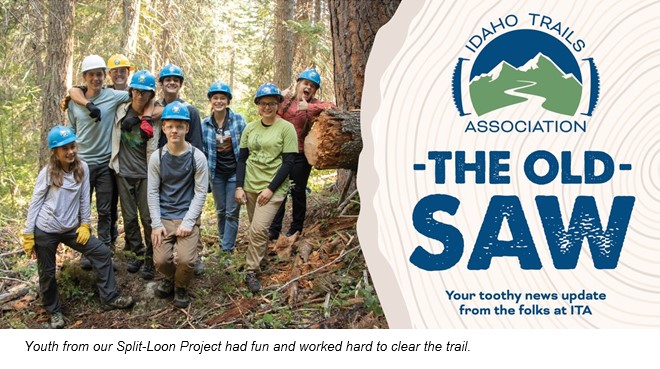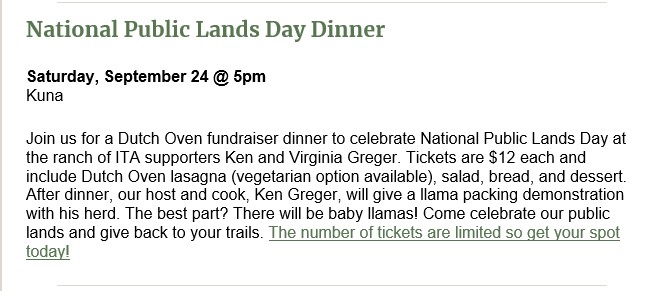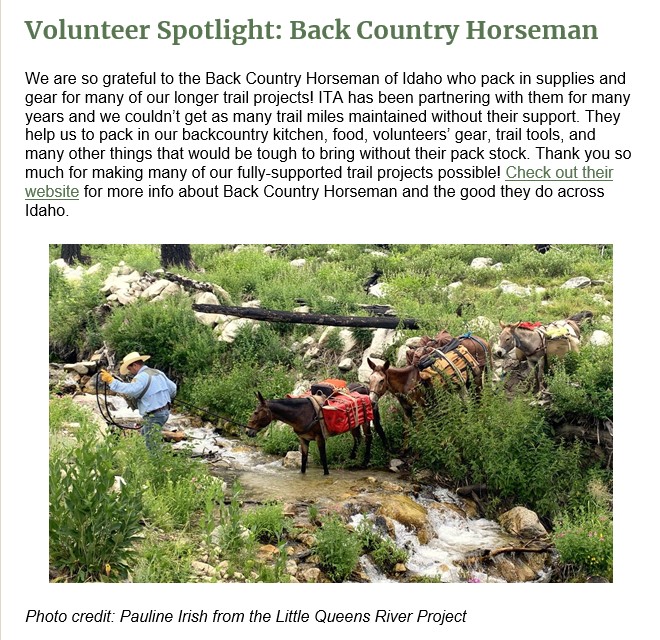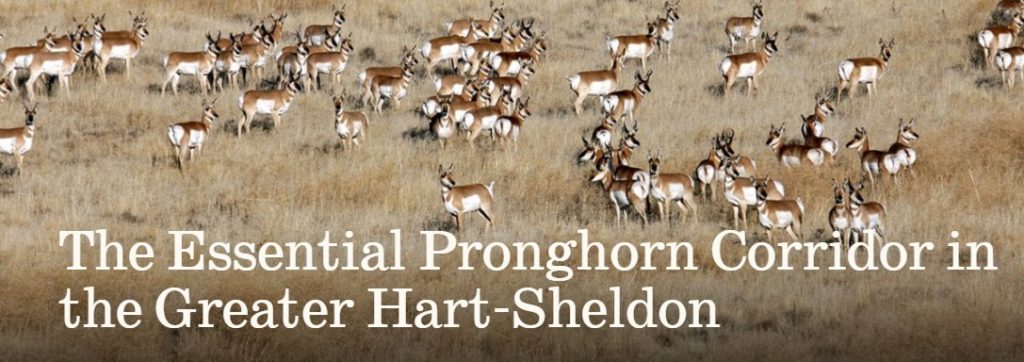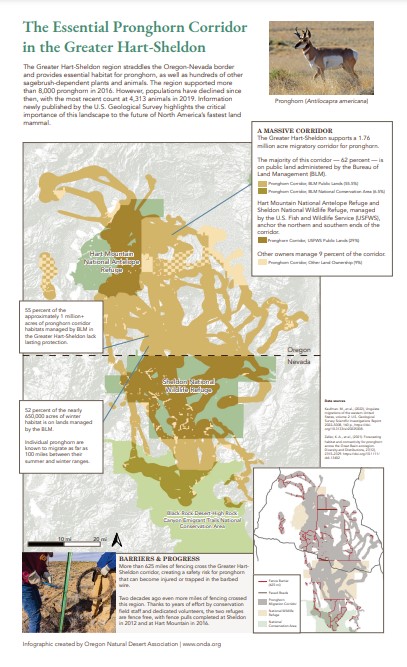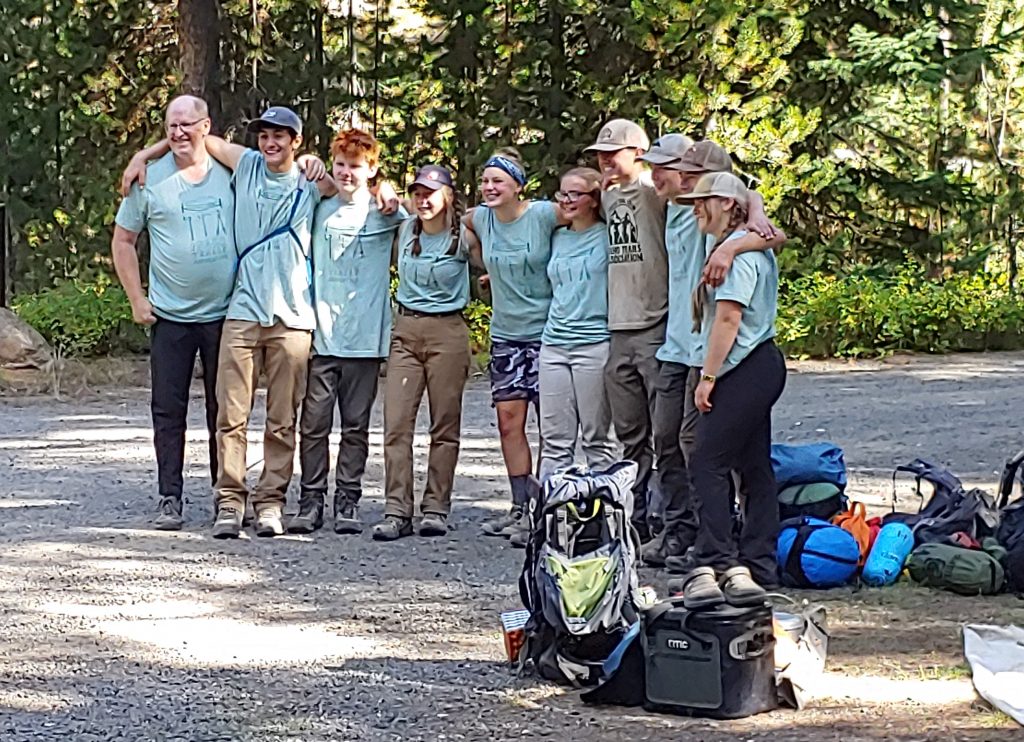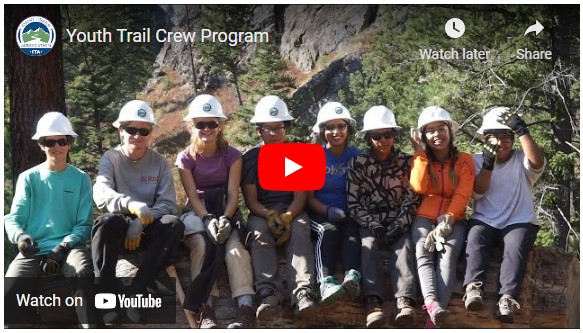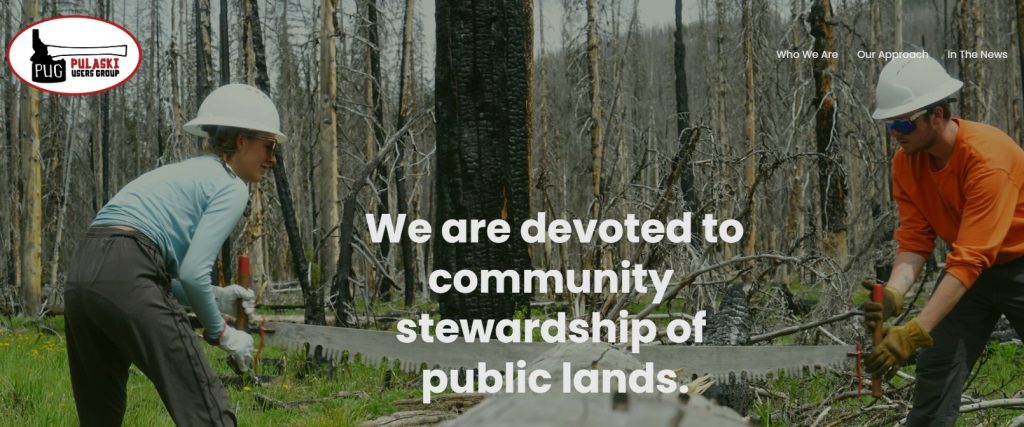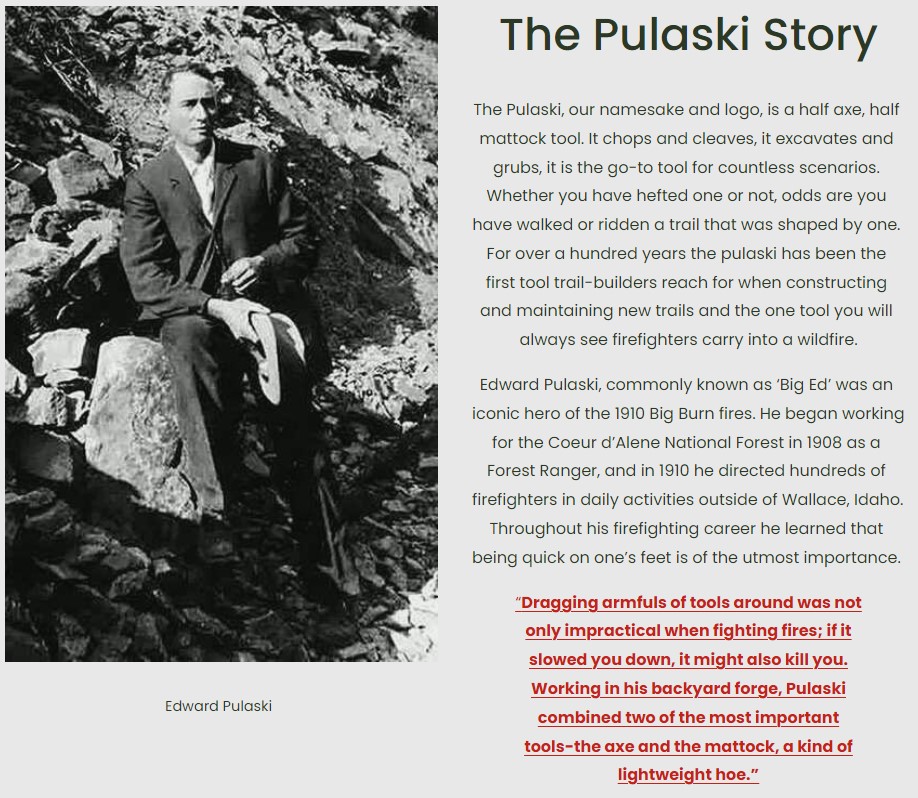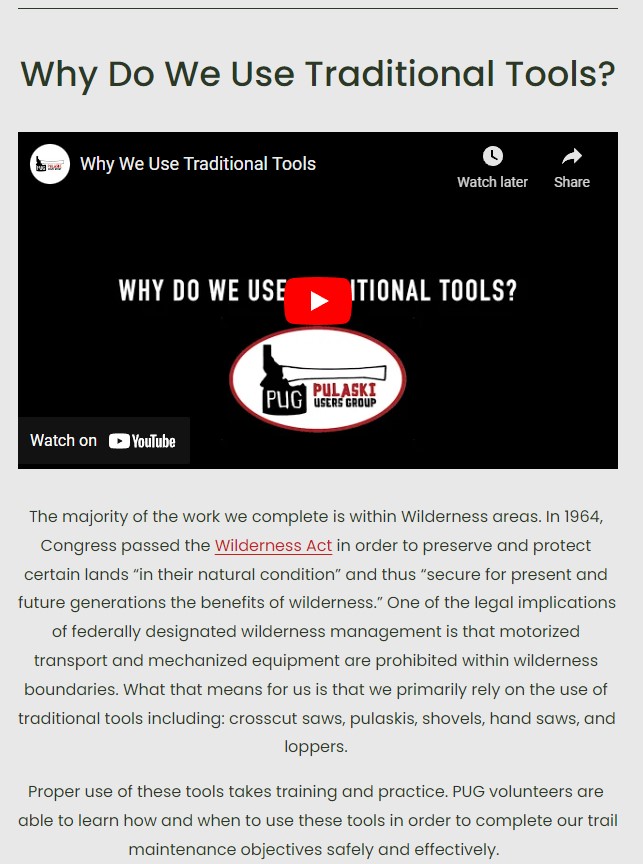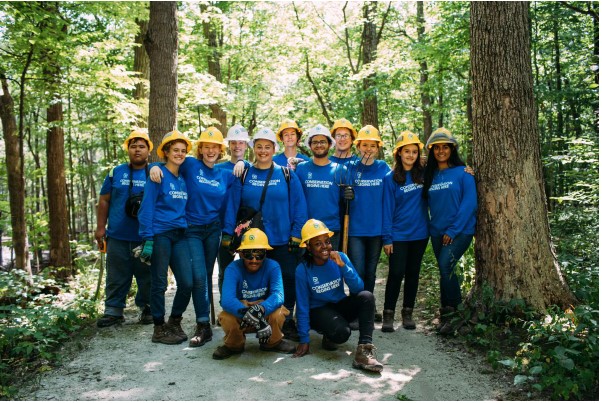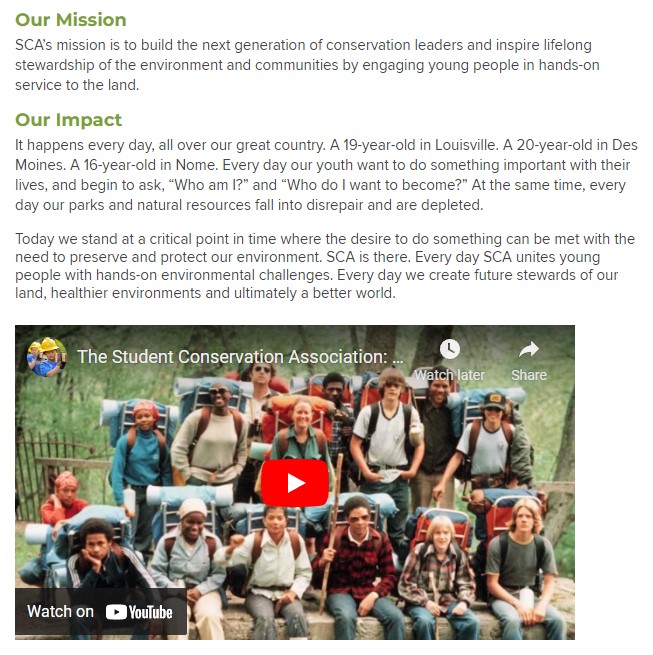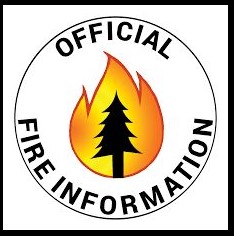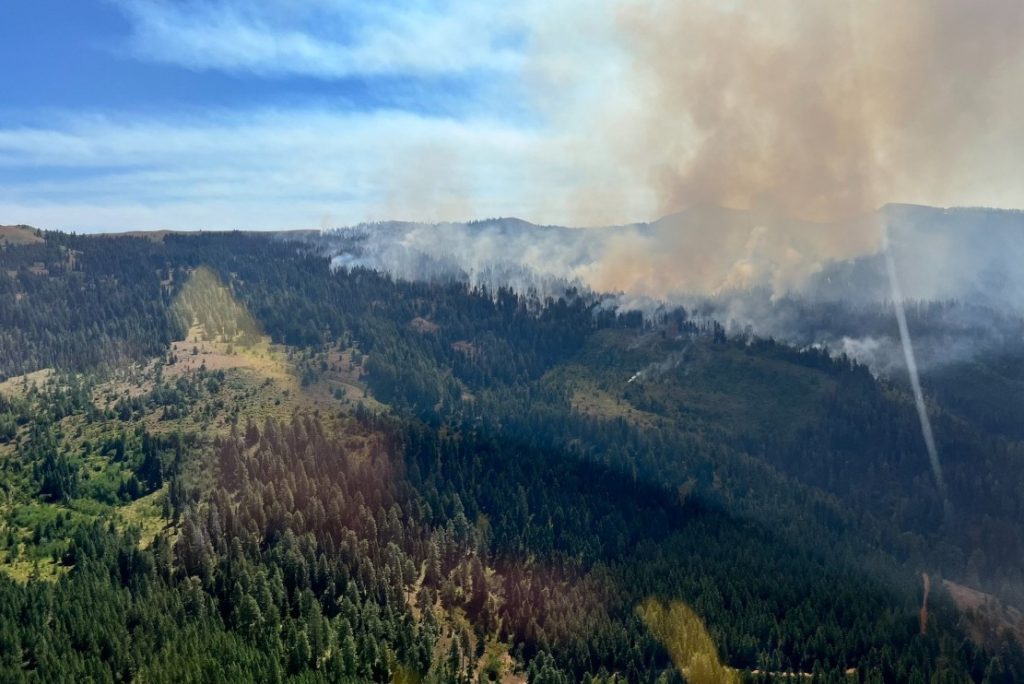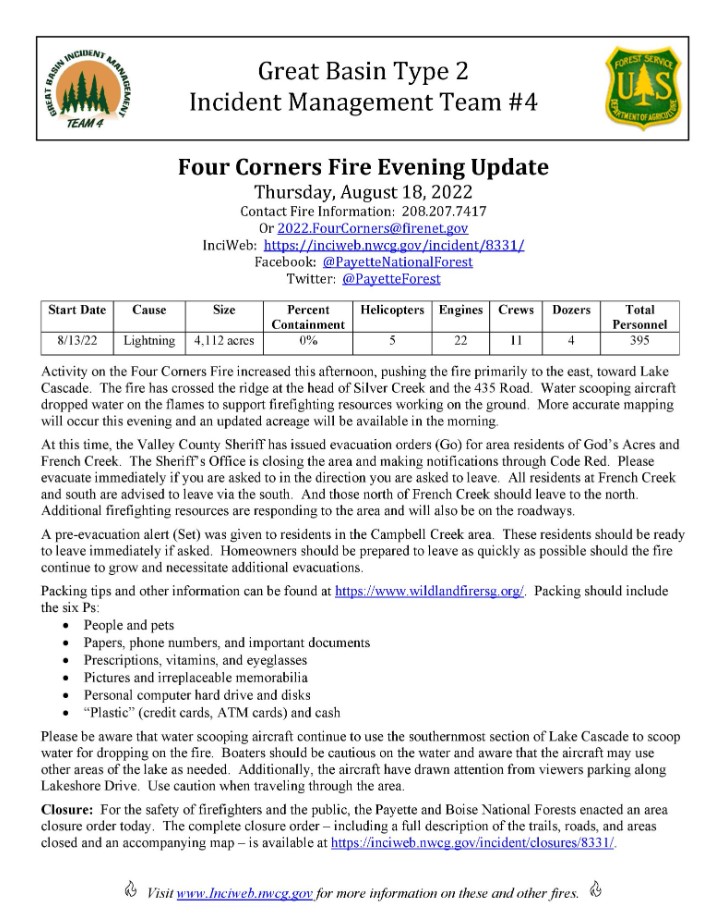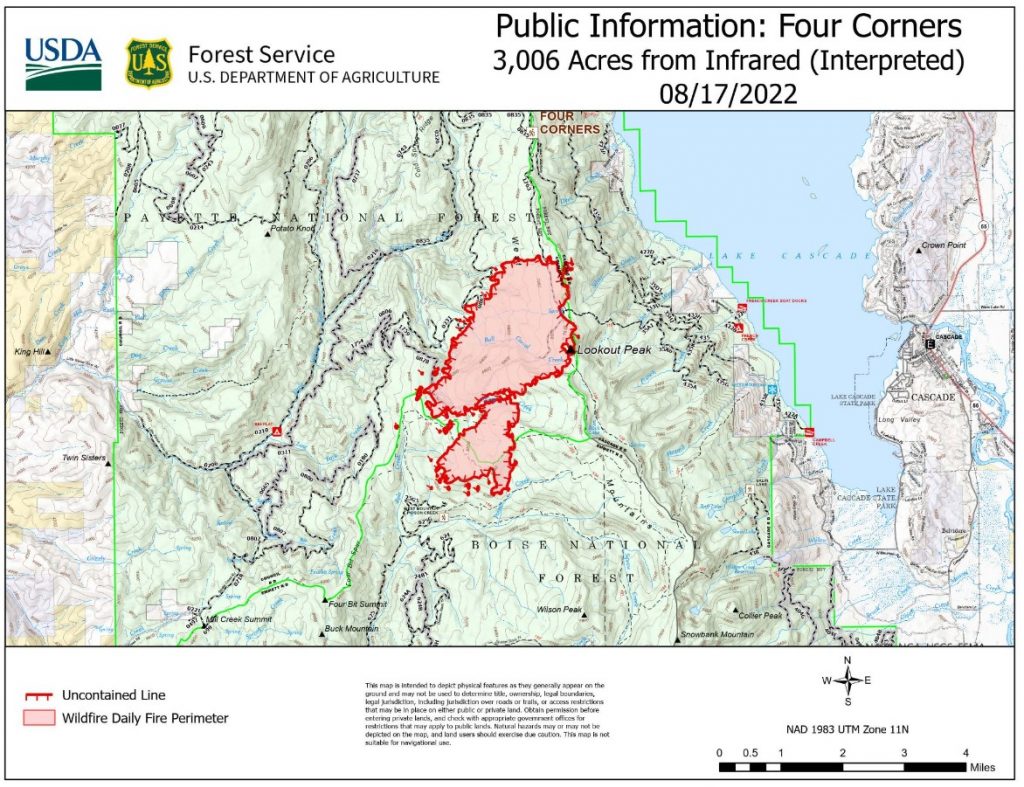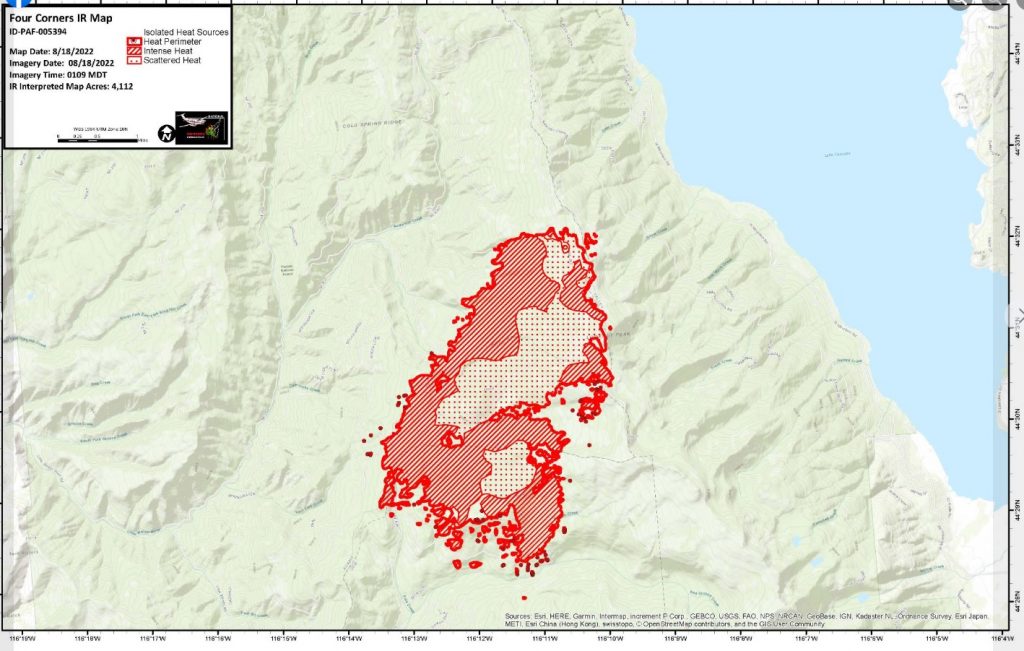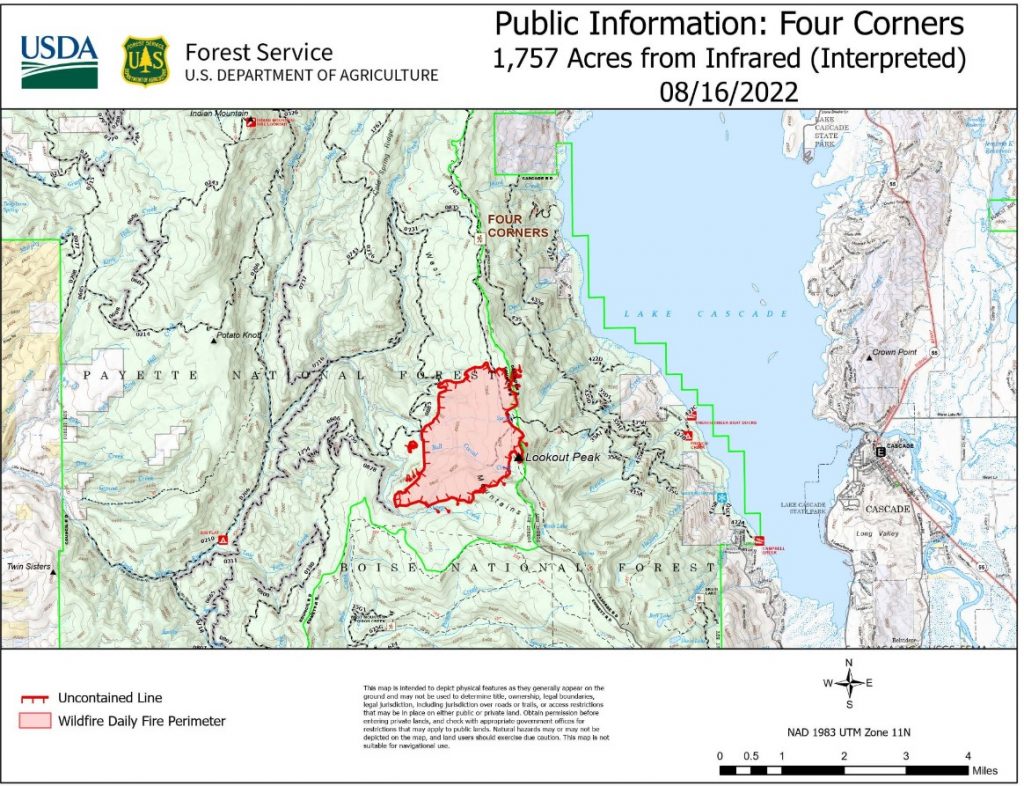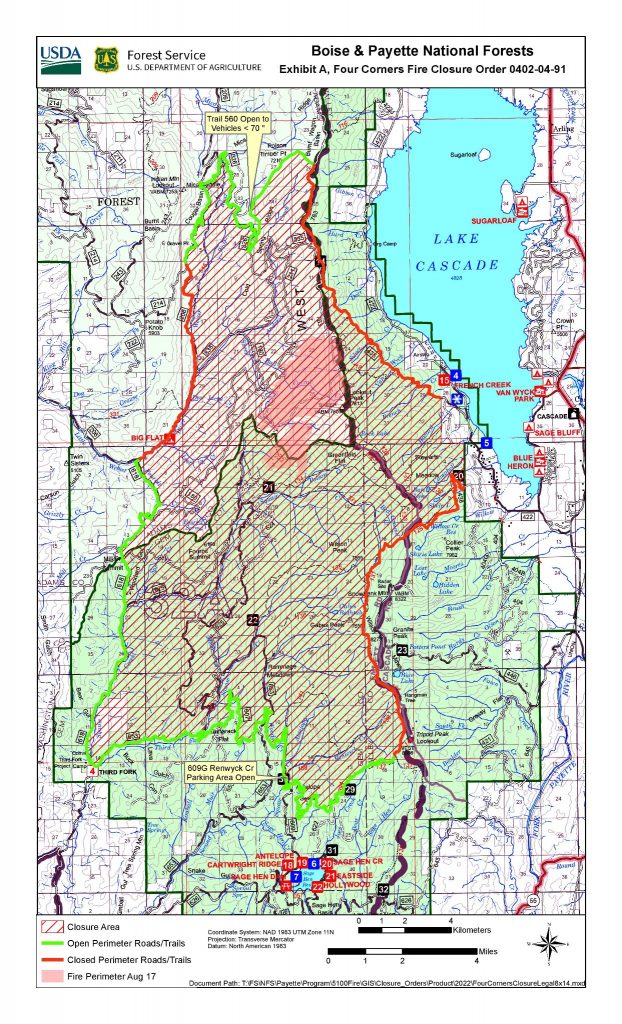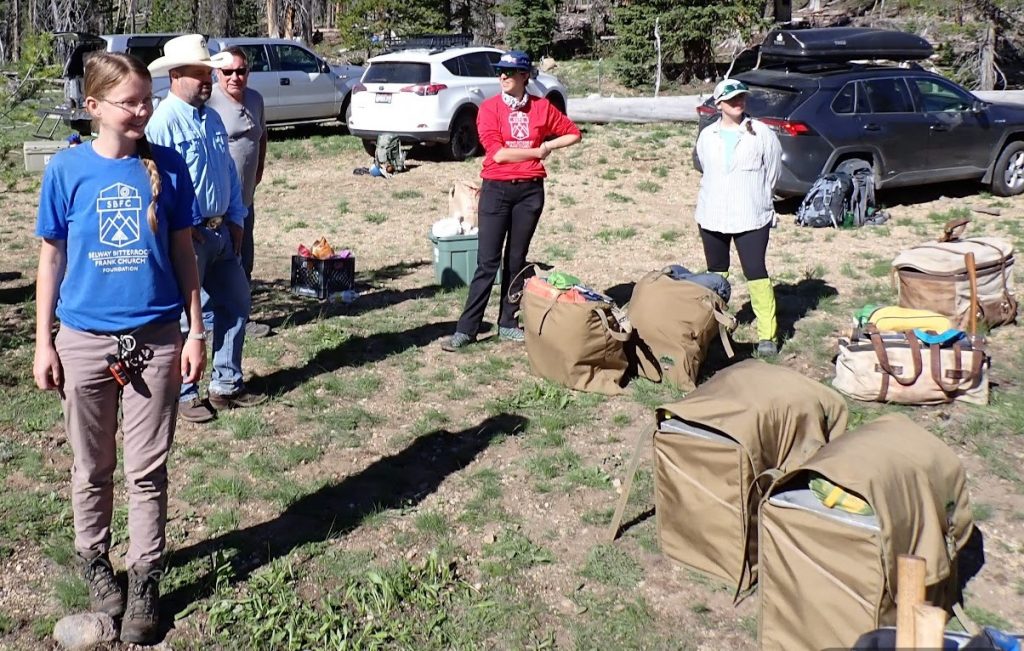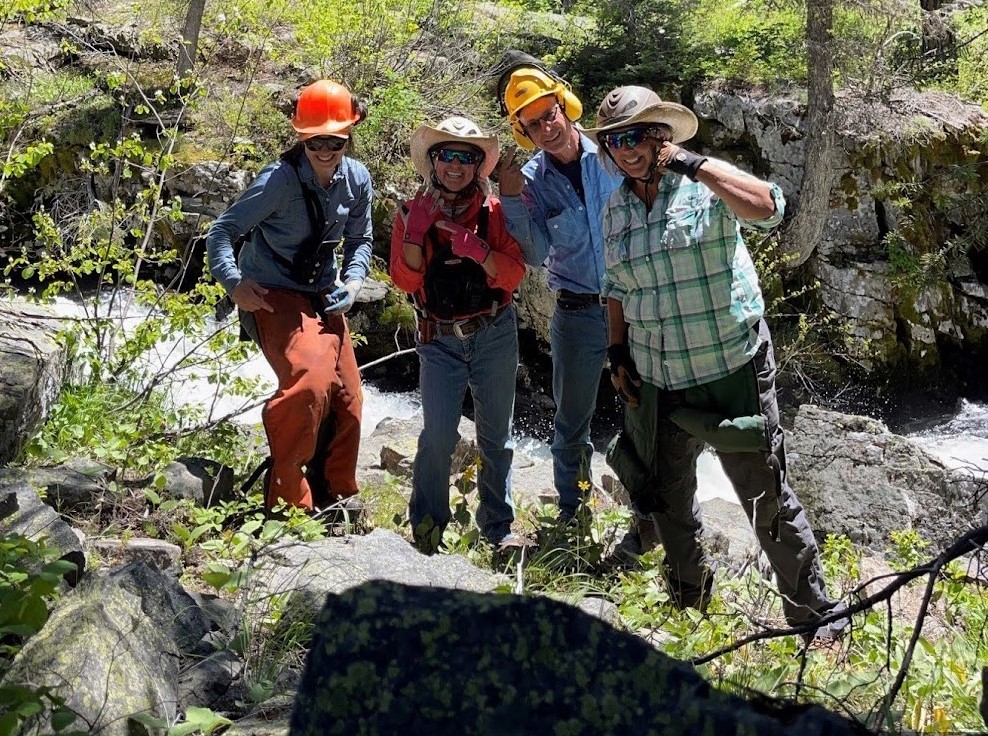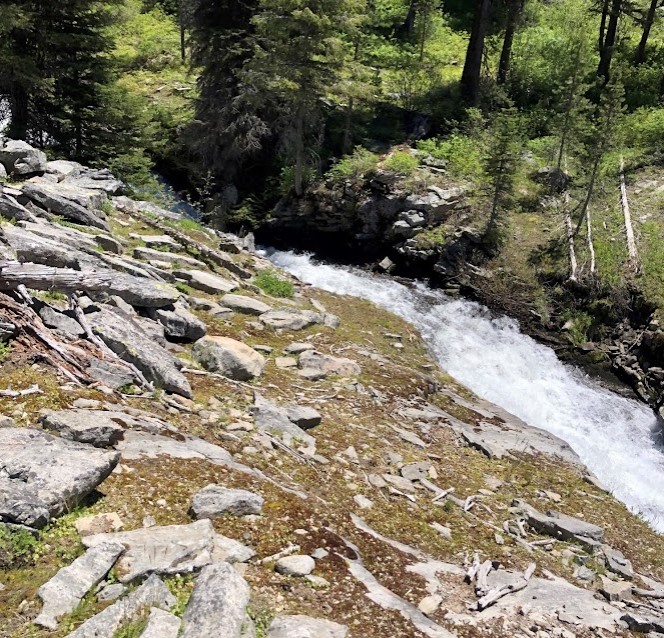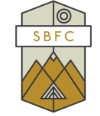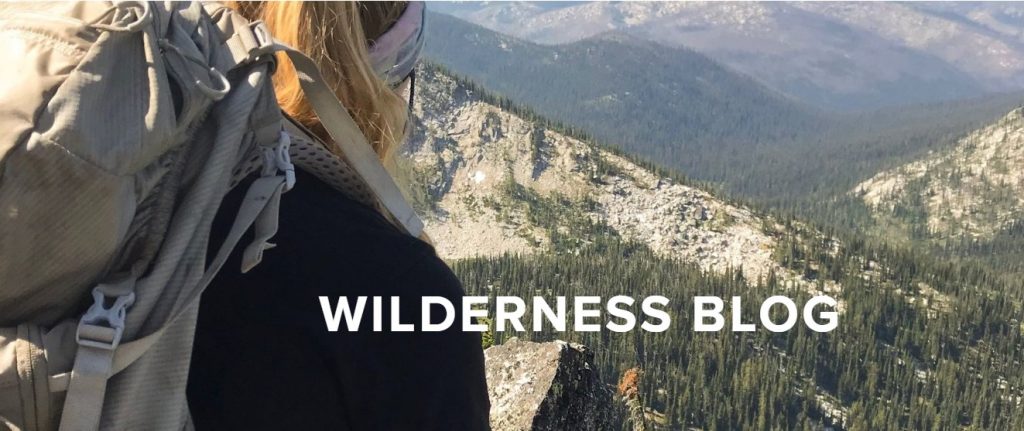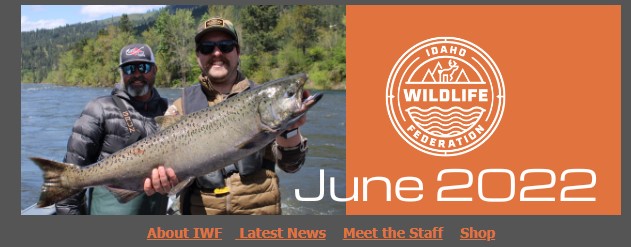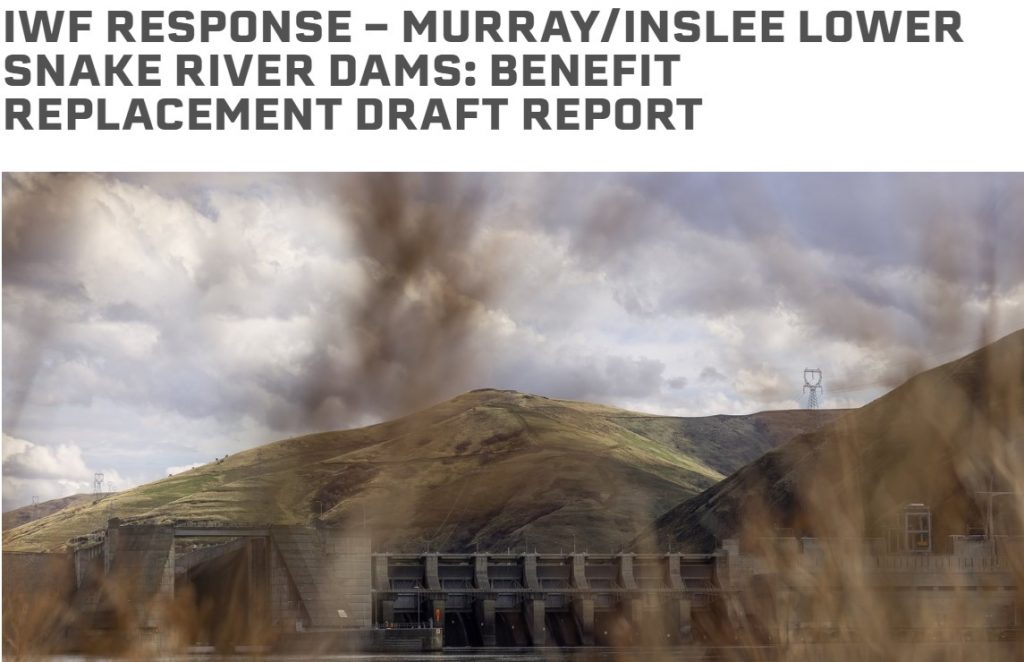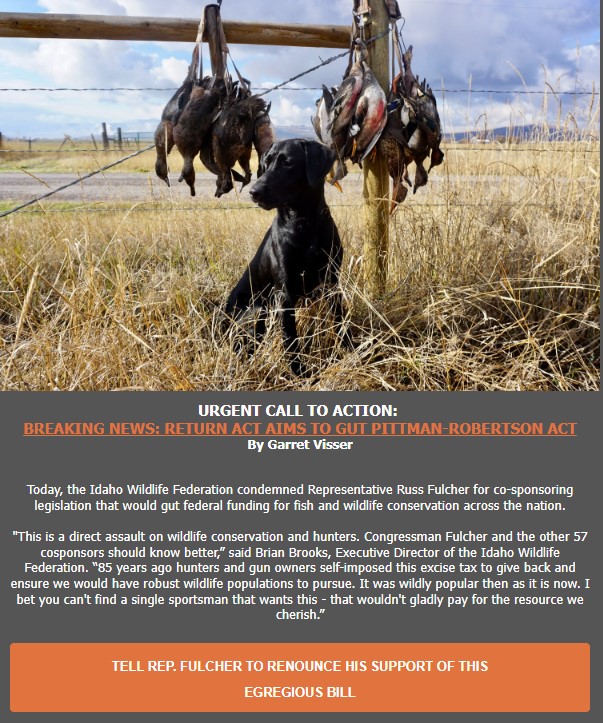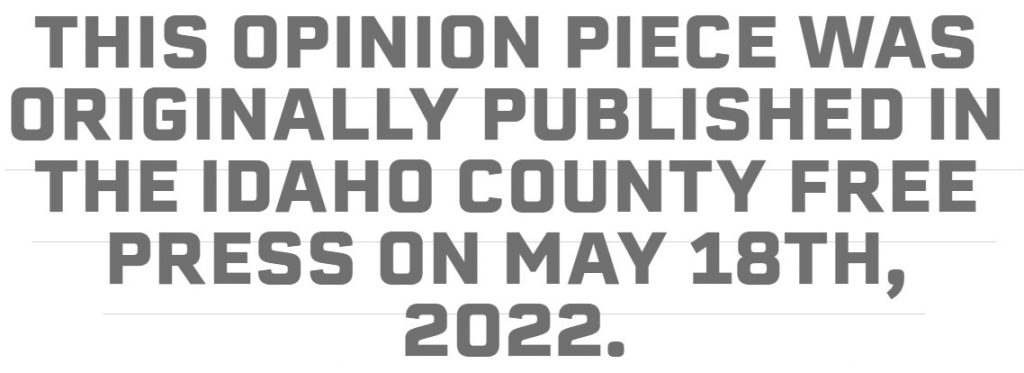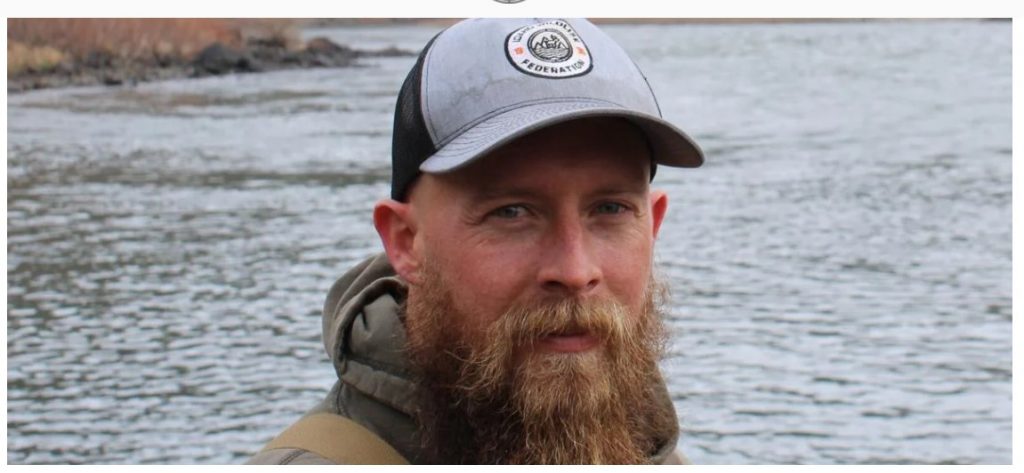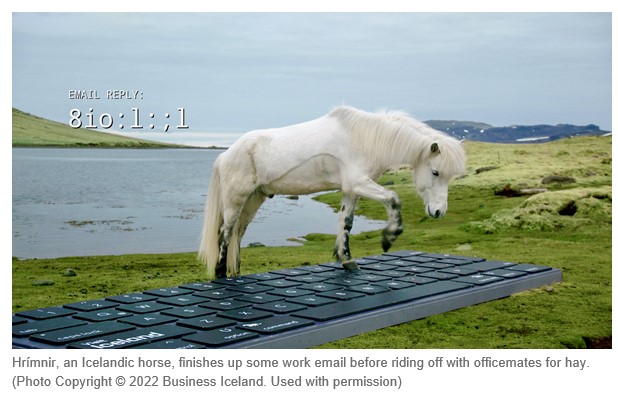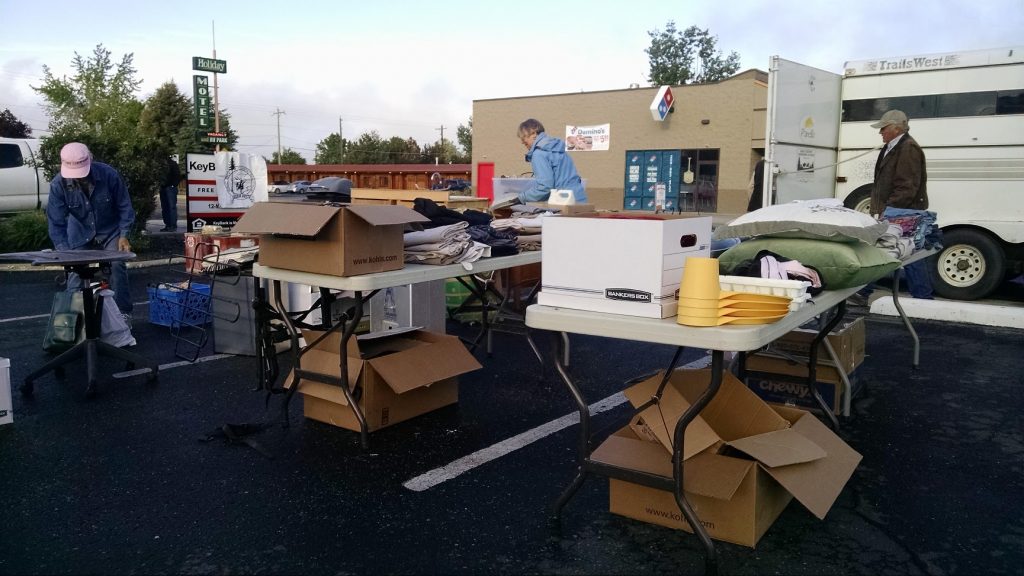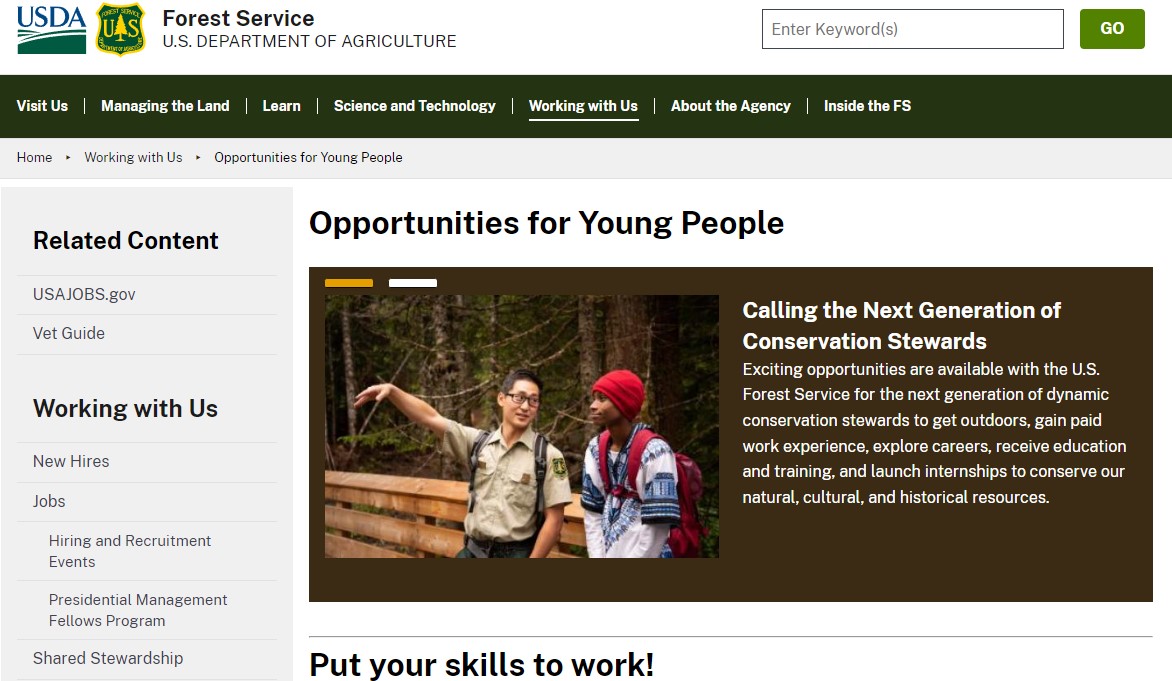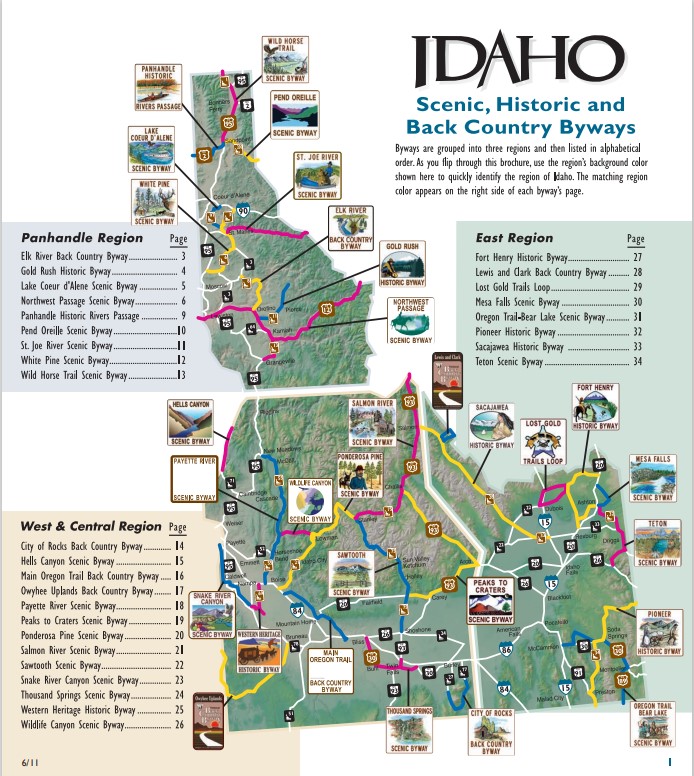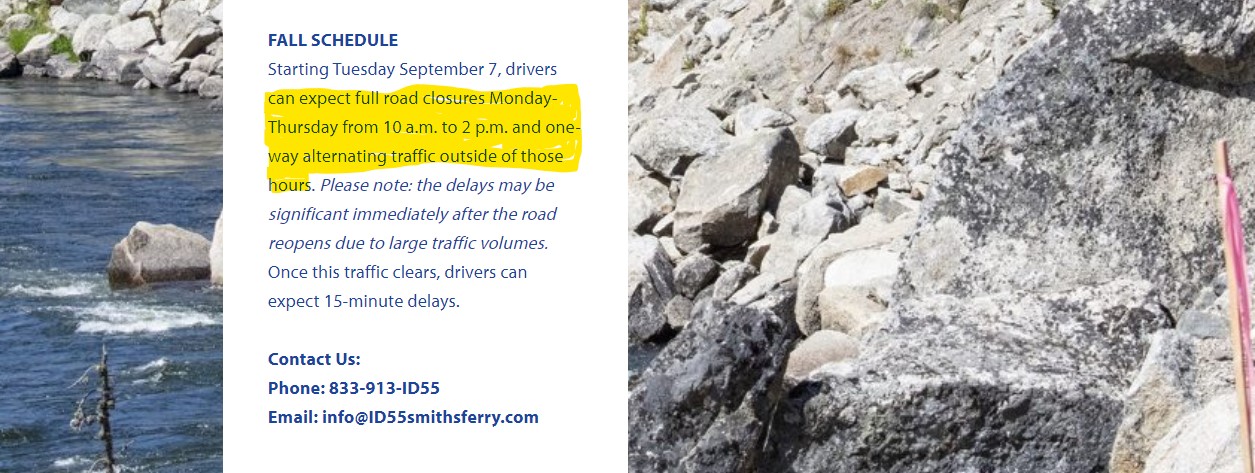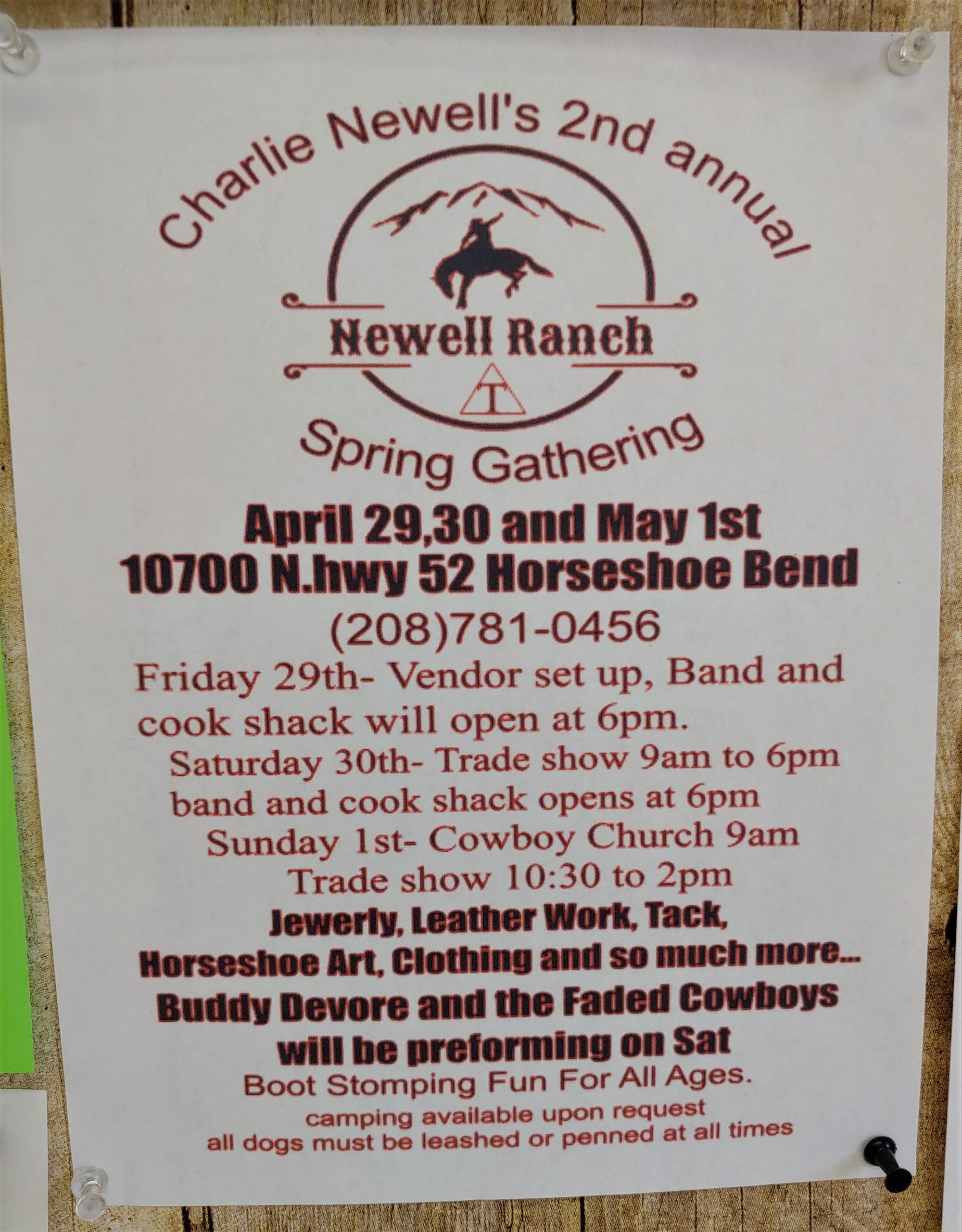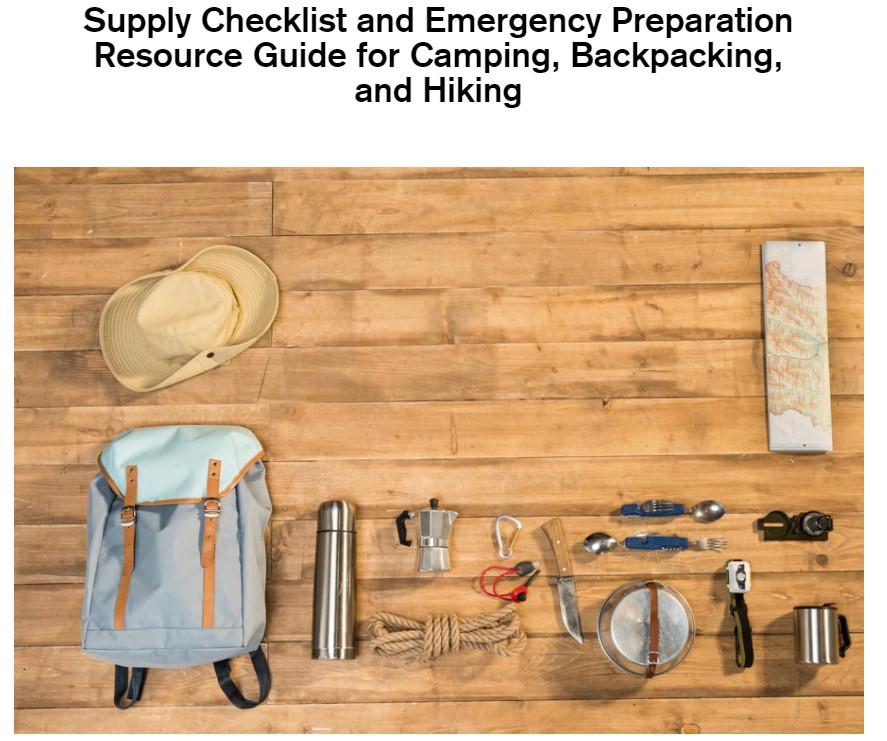 BY: CLARK CORBIN – AUGUST 29, 2022
BY: CLARK CORBIN – AUGUST 29, 2022
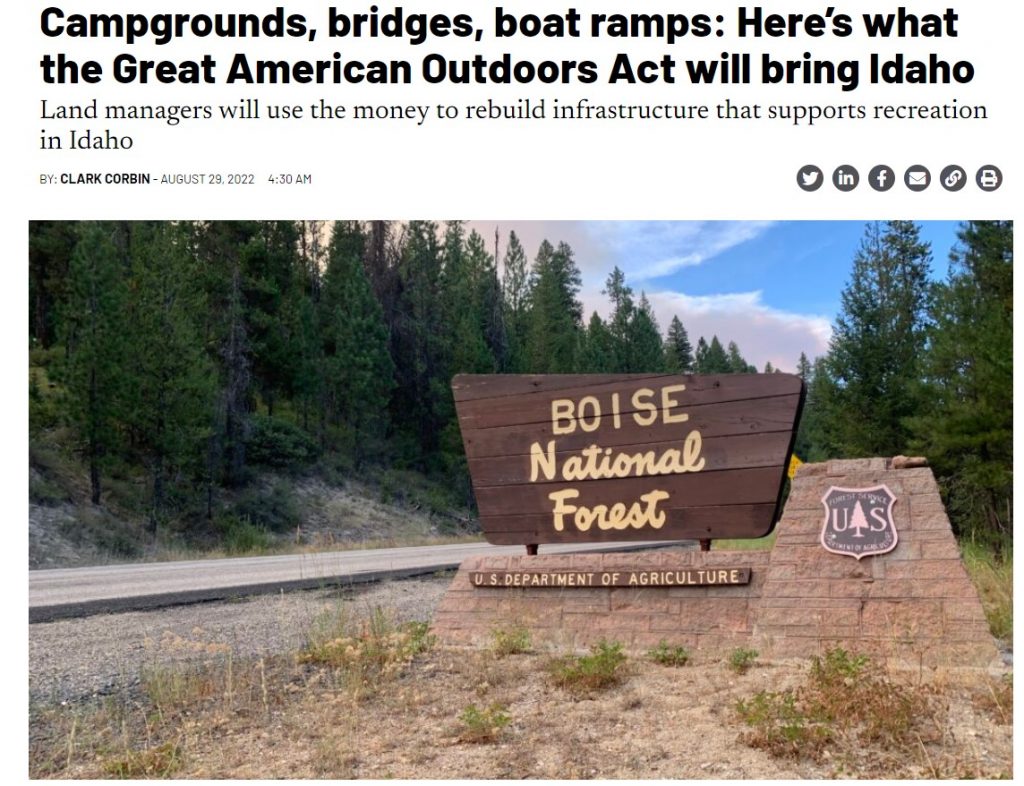 Idaho public lands and forests are in line to receive $28 million for the U.S. Forest Service and Bureau of Land Management to put toward improvements and upgrades through the first two years of funding from the Great American Outdoors Act.
Idaho public lands and forests are in line to receive $28 million for the U.S. Forest Service and Bureau of Land Management to put toward improvements and upgrades through the first two years of funding from the Great American Outdoors Act.
Enacted in August 2020, the Great American Outdoors Act is a five-year initiative that provides about $1.9 billion per year in federal funding from 2021 to 2025. Funding is split between the National Park Service, U.S. Forest Service, U.S. Fish and Wildlife Service, Bureau of Land Management and Bureau of Indian Education for projects across the country.
Public lands managers in Idaho say money allocated through the Great American Outdoors Act couldn’t be coming at a better time.
“The biggest impact from the Great American Outdoors Act, for us, is really the ability to improve recreation sites,” Bureau of Land Management Idaho State Director Karen Kelleher told the Idaho Capital Sun in a telephone interview.
“Idaho’s population is growing, and that was supercharged with COVID when a lot more people moved to Idaho and a lot more people discovered the outdoors,” Kelleher said. “The timing of the Great American Outdoors Act has been really fortuitous. We definitely had a significant backlog of work that needed to be done on recreation sites.”
For the 2021 and 2022 fiscal years, the Bureau of Land Management in Idaho has received a total of $11.4 million from the act, said Serena Baker, the BLM’s deputy state director for communications in Idaho. That money should allow the bureau to tackle 75% of its backlog of deferred maintenance at recreation sites, roads and facilities across Idaho.
“We couldn’t normally fund these projects, but it’s allowing us to do bigger projects,” Rod Collins, a deputy state director for the Bureau of Land Management in Idaho said in a phone interview.
Work in the Treasure Valley and beyond
One of the projects allows the BLM to improve the water, sewer and electrical systems at C.J. Strike Reservoir, a popular fishing destination located in Elmore and Owyhee counties that has produced three state record-breaking fish in recent weeks, Idaho News 6 reported.
The bureau will use about $1.6 million from the Great American Outdoors Act to complete repairs at the boat ramp and boat dock and improve parking at Beehive Bend, a popular recreation spot along the Payette River near the town of Horseshoe Bend. Design of the project is scheduled to begin this fall, with repairs to follow.
Great American Outdoors Act funding will also go to road maintenance, campsite improvements and brush clearing at the Wolf Flats Recreation Area east of Idaho Falls. Wolf Flats is a popular, no-fee spot along the Snake River for fishing and camping.
Bureau of Land Management officials said that having five years of funding in the law allows them to focus on the design and engineering of projects in the first couple of years and move into construction and repairs in the remaining years. Projects were chosen from a database of work orders and condition assessment of sites that were prioritized and submitted to Bureau of Land Management headquarters. The amount of funding available allows officials to focus on replacing pieces of Idaho’s outdoors infrastructure that may have come to the end of their lifespan, like water systems, boat ramps or bridges.
“The public will really enjoy the sites more and be able to enjoy them, and we will be in a position where we can maintain them,” Kelleher said.
The Sun has previously reported on some of the Great American Outdoors Act projects, including improvements and upgrades at the National Interagency Fire Center facility adjacent to the Boise Airport.
Meanwhile, officials with the U.S. Forest Service identified $7.7 million worth of approved projects from 2021 and $9.8 million in requested funding and projects for 2022, according to a U.S. Forest Service overview of Idaho project and Intermountain Region press officer Marshall Thompson.
The largest of the Forest Service’s requested 2022 projects proposes spending almost $3.5 million to reconstruct Forest Service Road 214 on the way to Redfish Lake. Another proposed 2022 project aims to spend $2.2 million to improve six campgrounds in the Sage Hen Recreation Area in the Boise National Forest, Emmett Ranger District.
Timelines for completing construction vary from project to project, and some projects will take multiple years to complete.
Projects in the Boise National Forest
- $75,000 for toilet replacements at the Buck Mountain, Troutdale and Penny Springs Campgrounds in the Boise National Forest, Cascade Ranger District.
- $160,000 for improvements at the Edna Creek Campground in the Boise National Forest, Idaho City Ranger District.
- $275,000 for replacing a timber bridge with a new prefabricated steel bridge at the East Fork Burnt Log Creek in the Cascade Ranger District on a popular road that leads to the Frank Church River of No Return Wilderness.
- $258,000 for reconstructing the water system at the Idaho City Ranger District’s housing compound used by fire and timber crews and permanent employees.
- $189,600 to reconstruct the water system at a Boise National Forest, Emmett Ranger District administrative site that also includes a cabin that is available for the public to rent.
- $275,000 for replacing the bridge Scriver Creek in the Emmett Ranger District with a nail-laminated deck that U.S. Forest Service officials said will improve safety and access.
- $53,000 for trail maintenance and signs on the Yellow Jacket, 10 Mile and Silver Creek Summit trails in the Boise National Forest.
Total: $1.3 million in approved projects.

- $58,500 for replacing the water system at the Huckleberry Campground in the Payette National Forest, Council Ranger District.
- $83,876 for trail maintenance along the South Fork Salmon River Trail in the Payette National Forest, Krassel Ranger District.
- $70,945 for rerouting sections of the French Creek and Bear Pete Ridge trails in the Payette National Forest, McCall Ranger District.
- $167,298 for replacing fire pits, picnic tables, grills, bathrooms and signs at seven developed campgrounds and several primitive campsites in the Krassel Ranger District.
- $51,800 for replacing picnic tables, fire rings, signs and kiosks at the Last Chance Campground and Hazel Lake Campground in the Payette National Forest, New Meadows Ranger District.
- $134,650 for rerouting 1.5 miles of the Little Weiser Trail in the Council Ranger District.
- $269,000 for deferred maintenance and building repairs at the Burgdorf Guard Station in the McCall Ranger District.
- $400,000 to replace the failed Jenkins Crossing trail bridge in the McCall Ranger District to restore public access to once-popular trails.
- $95,095 to repair bridges in the Council Ranger District and Weiser Ranger District.
Total: $1.3 million in approved projects.
READ MORE

